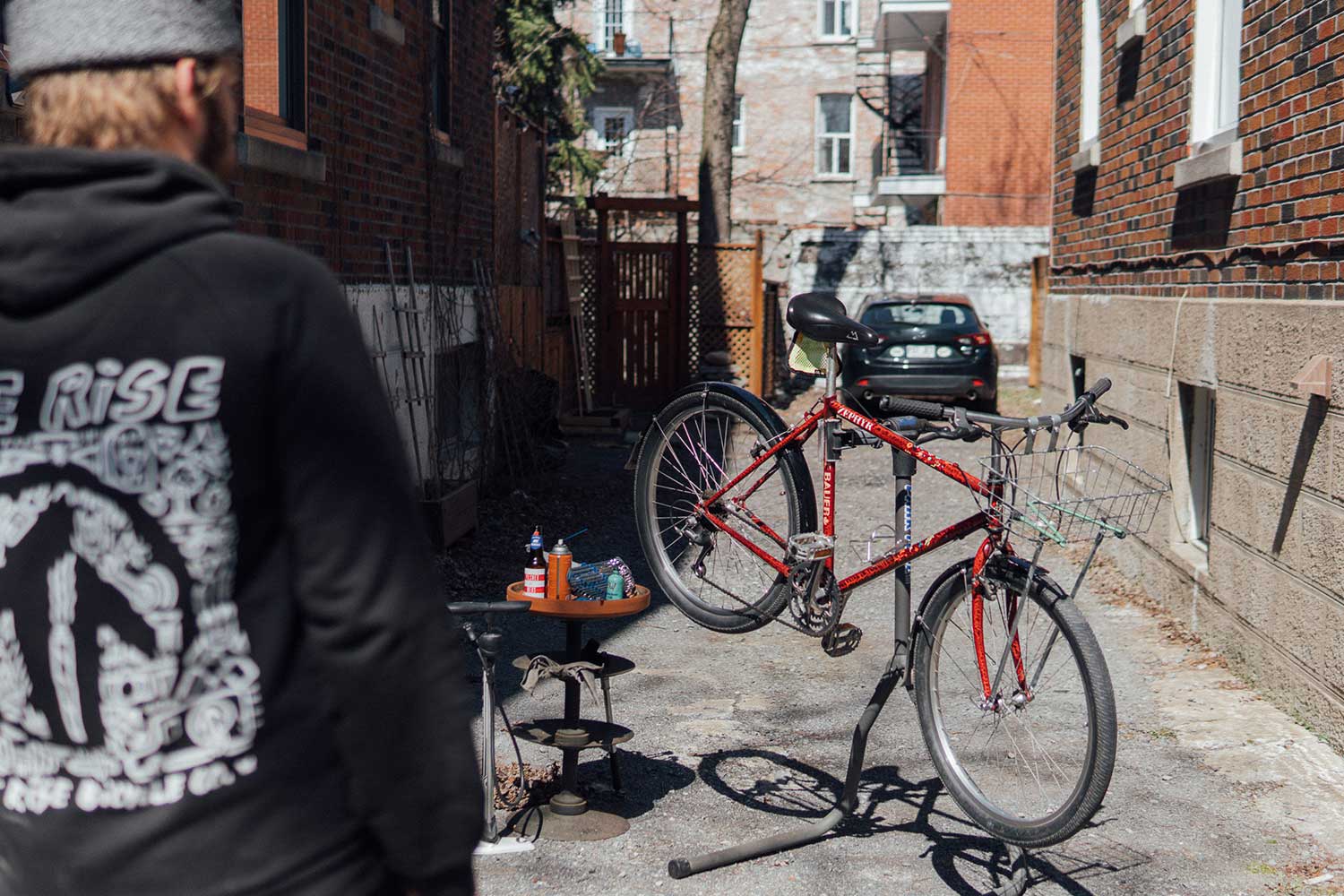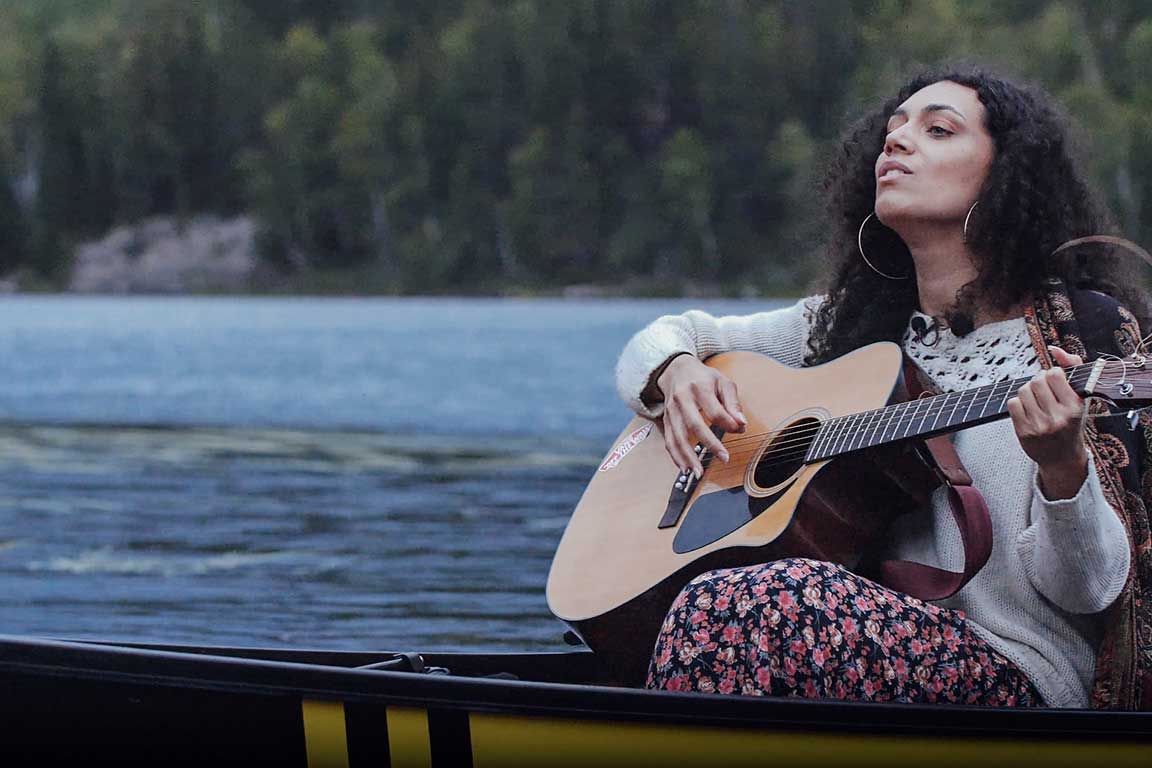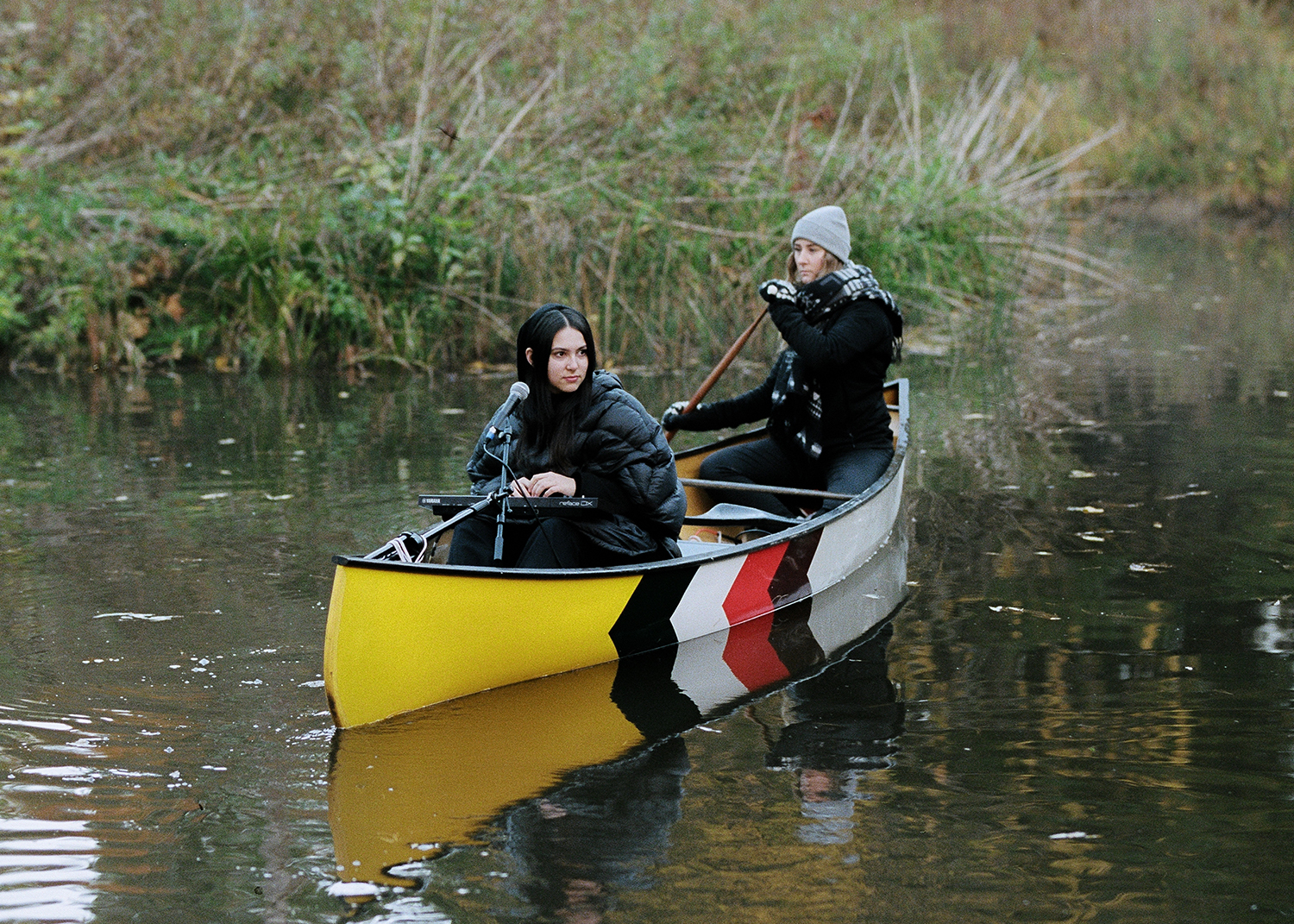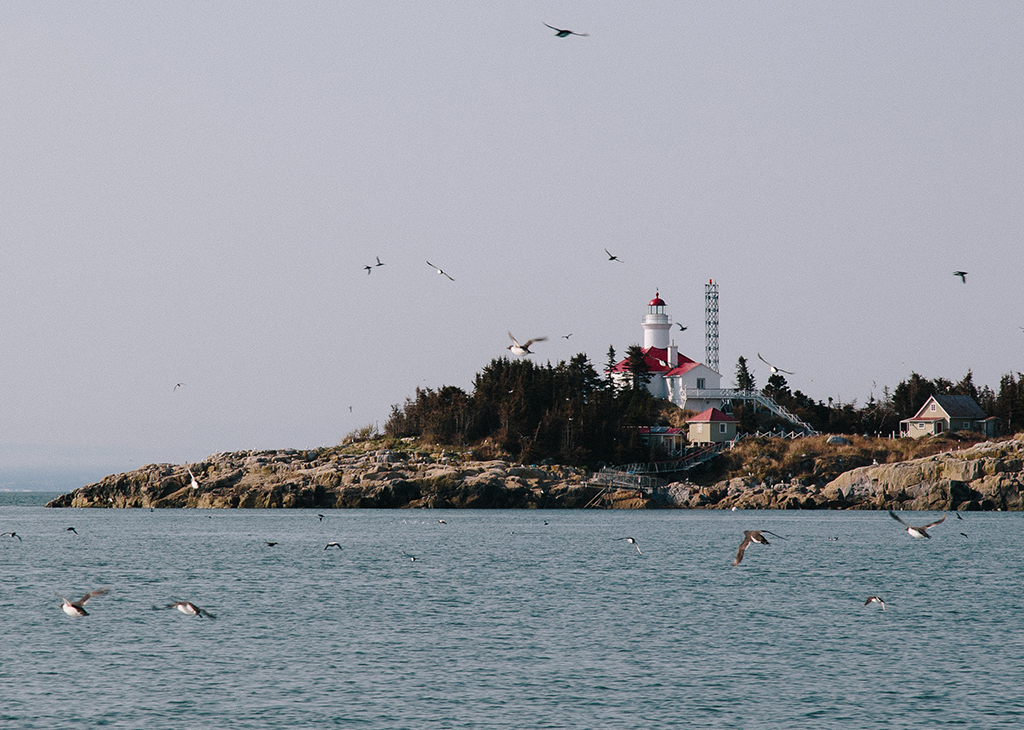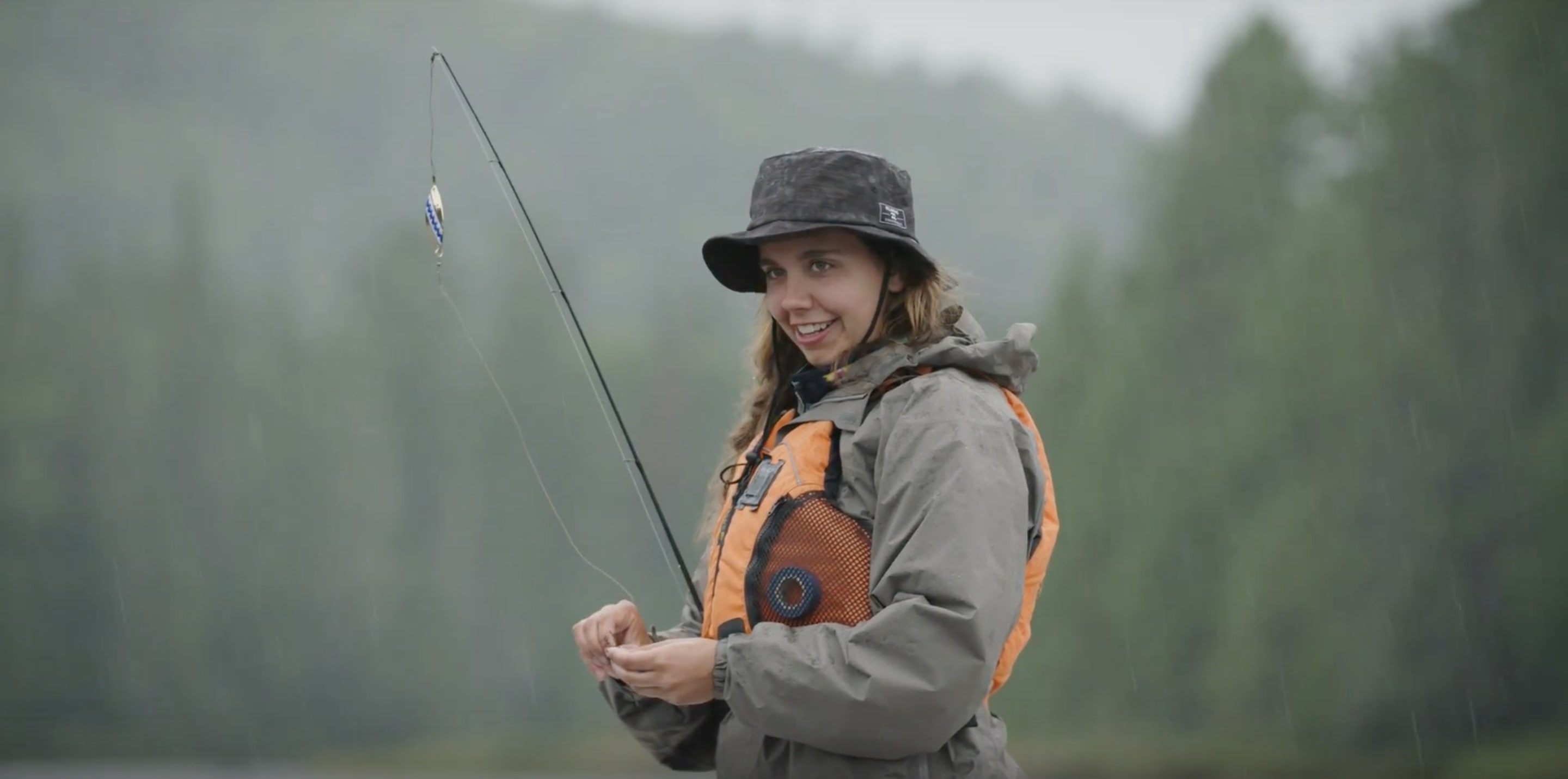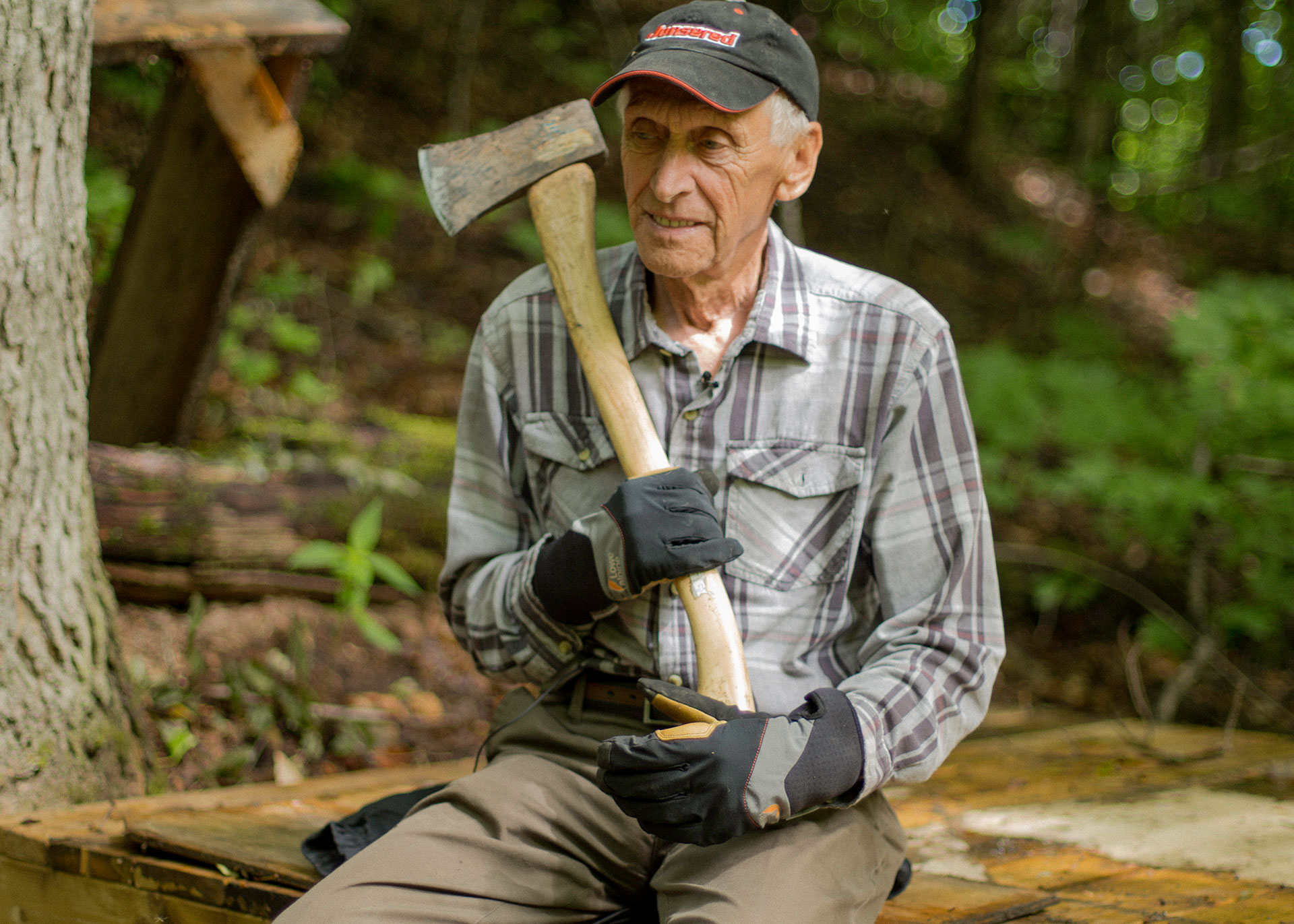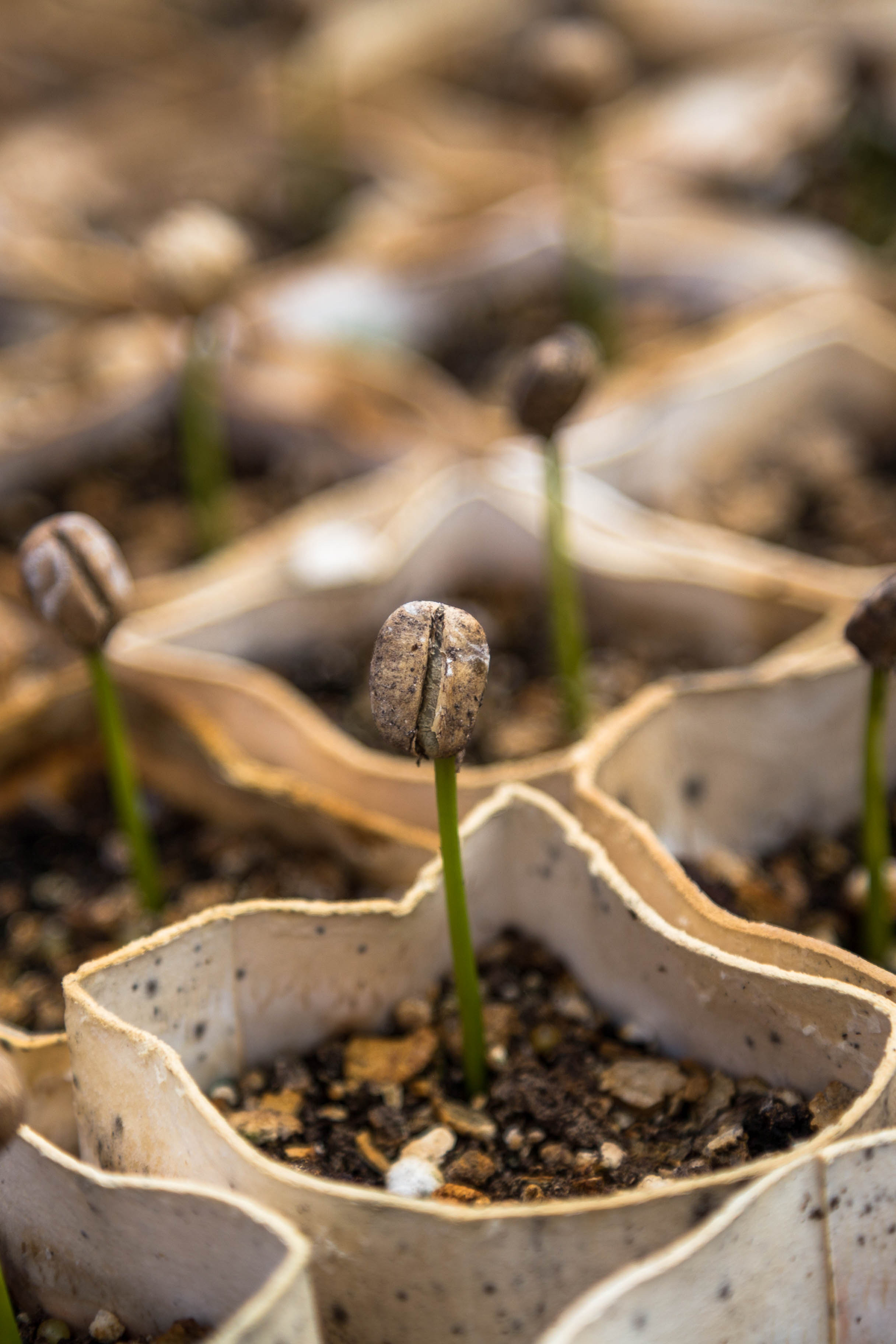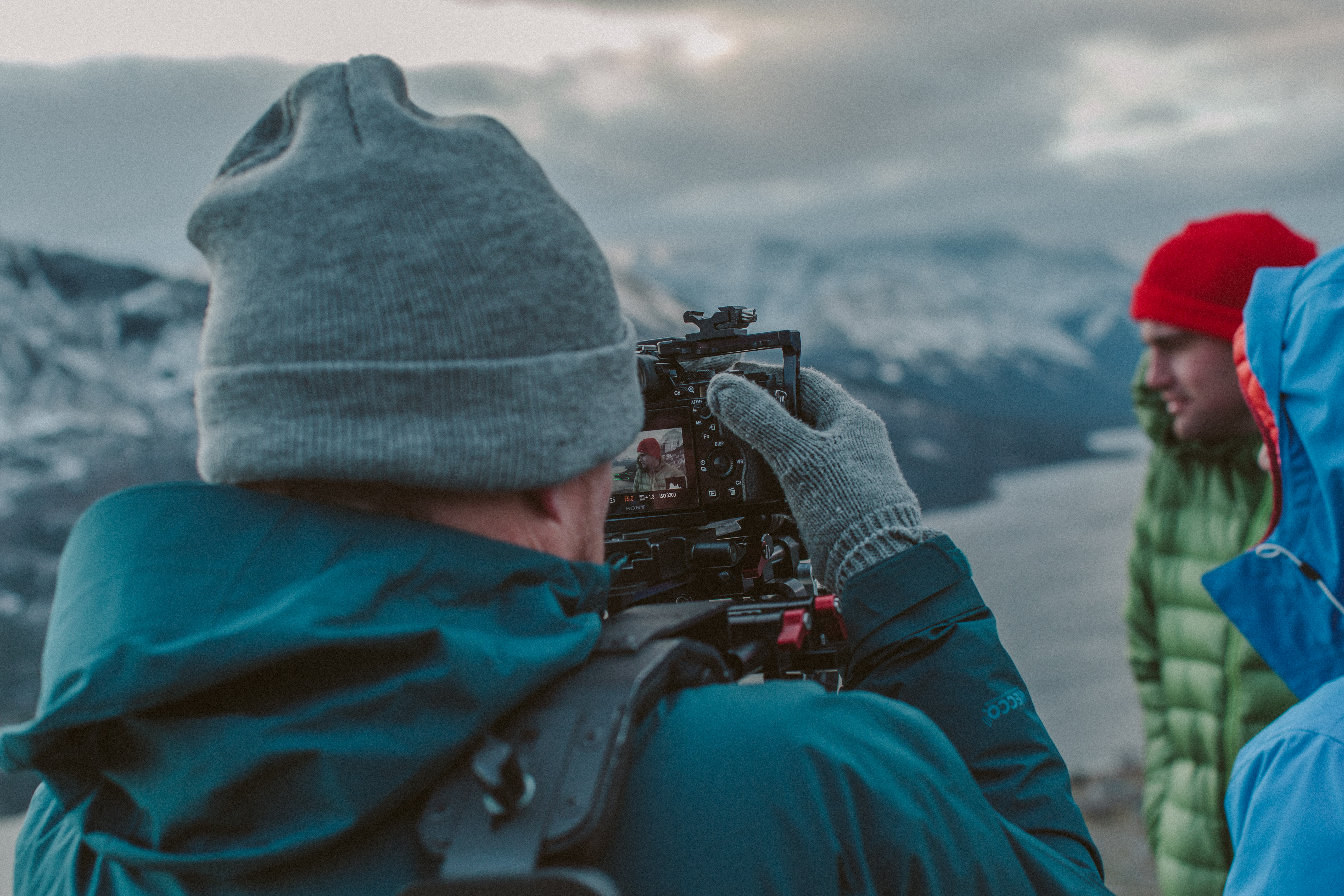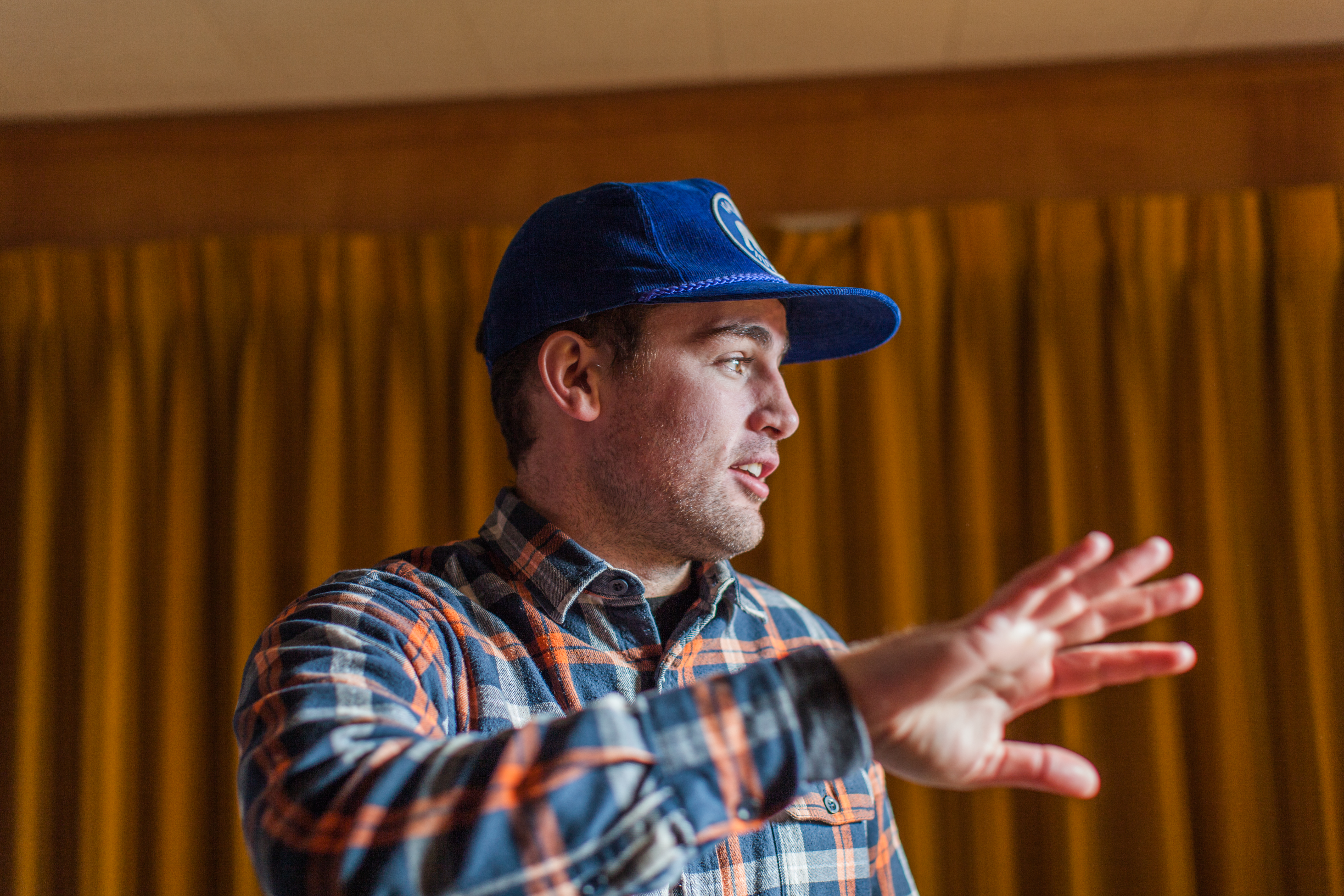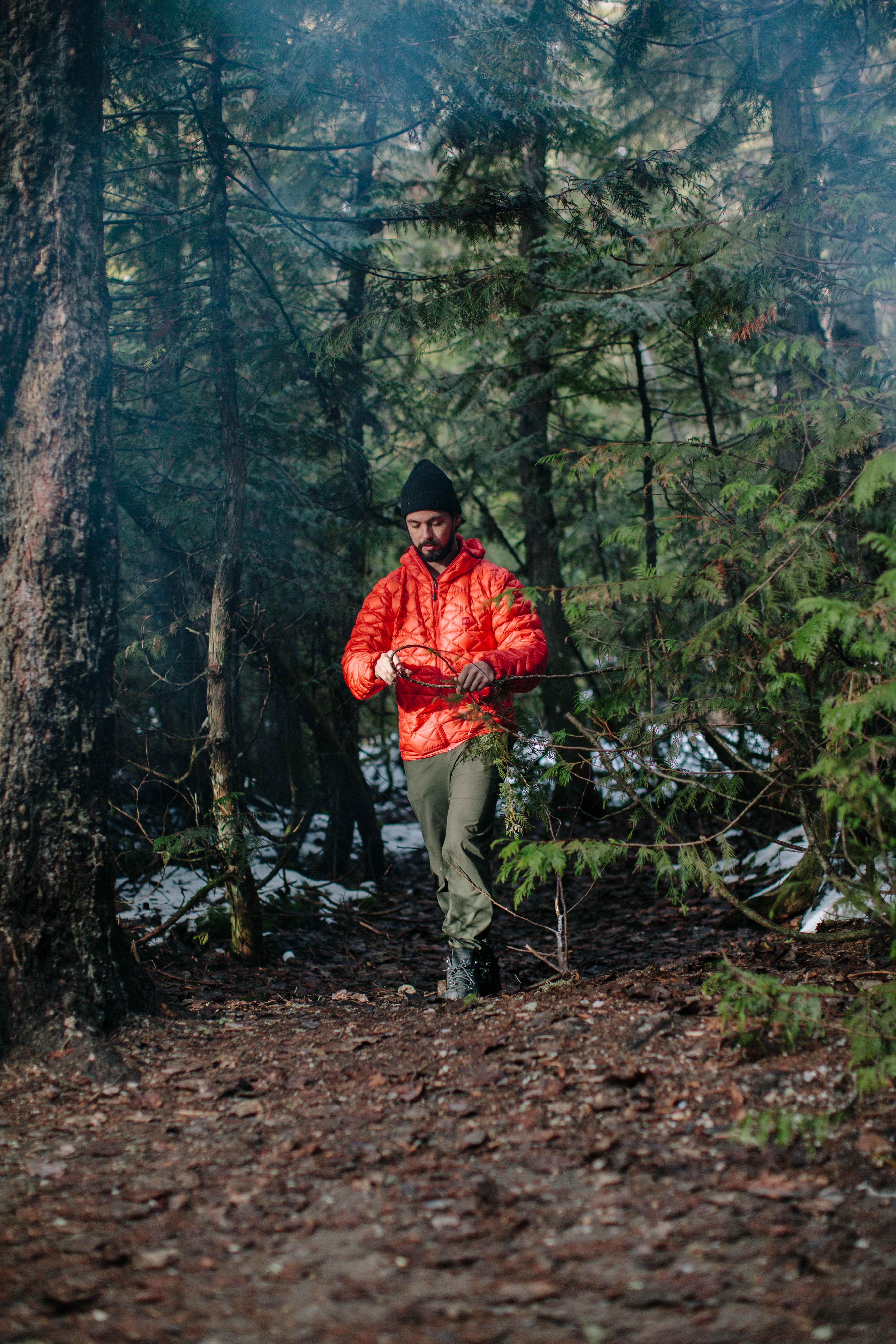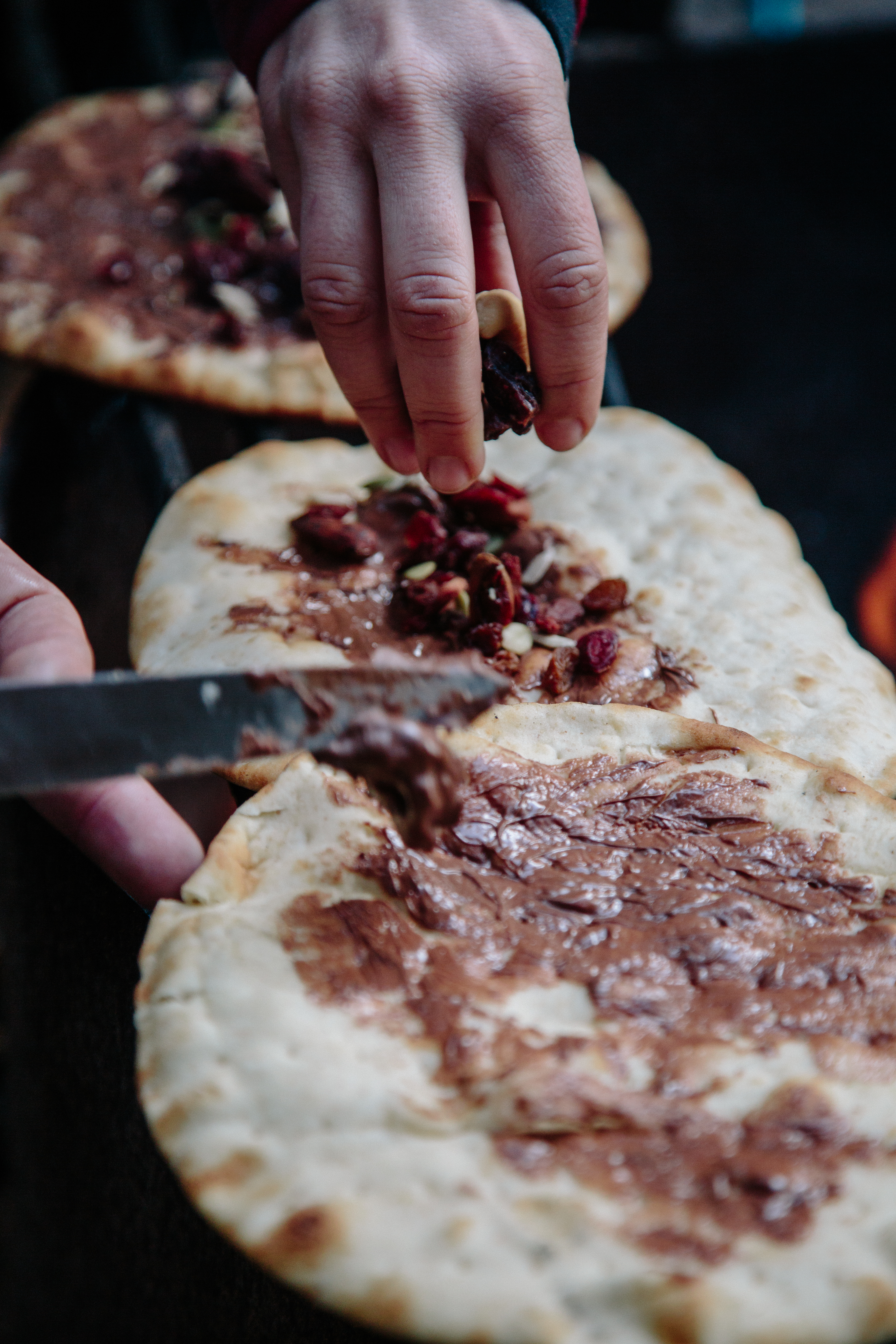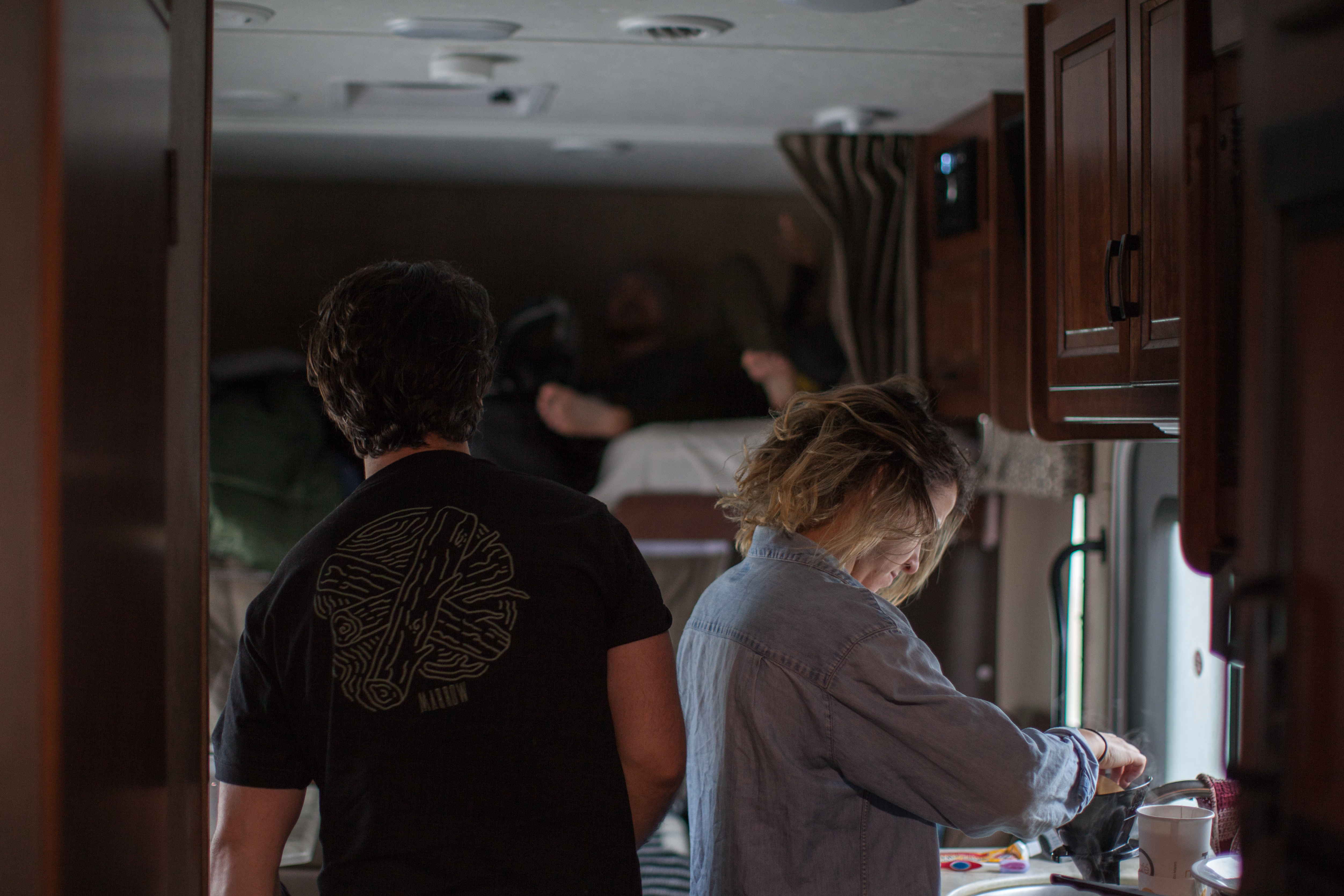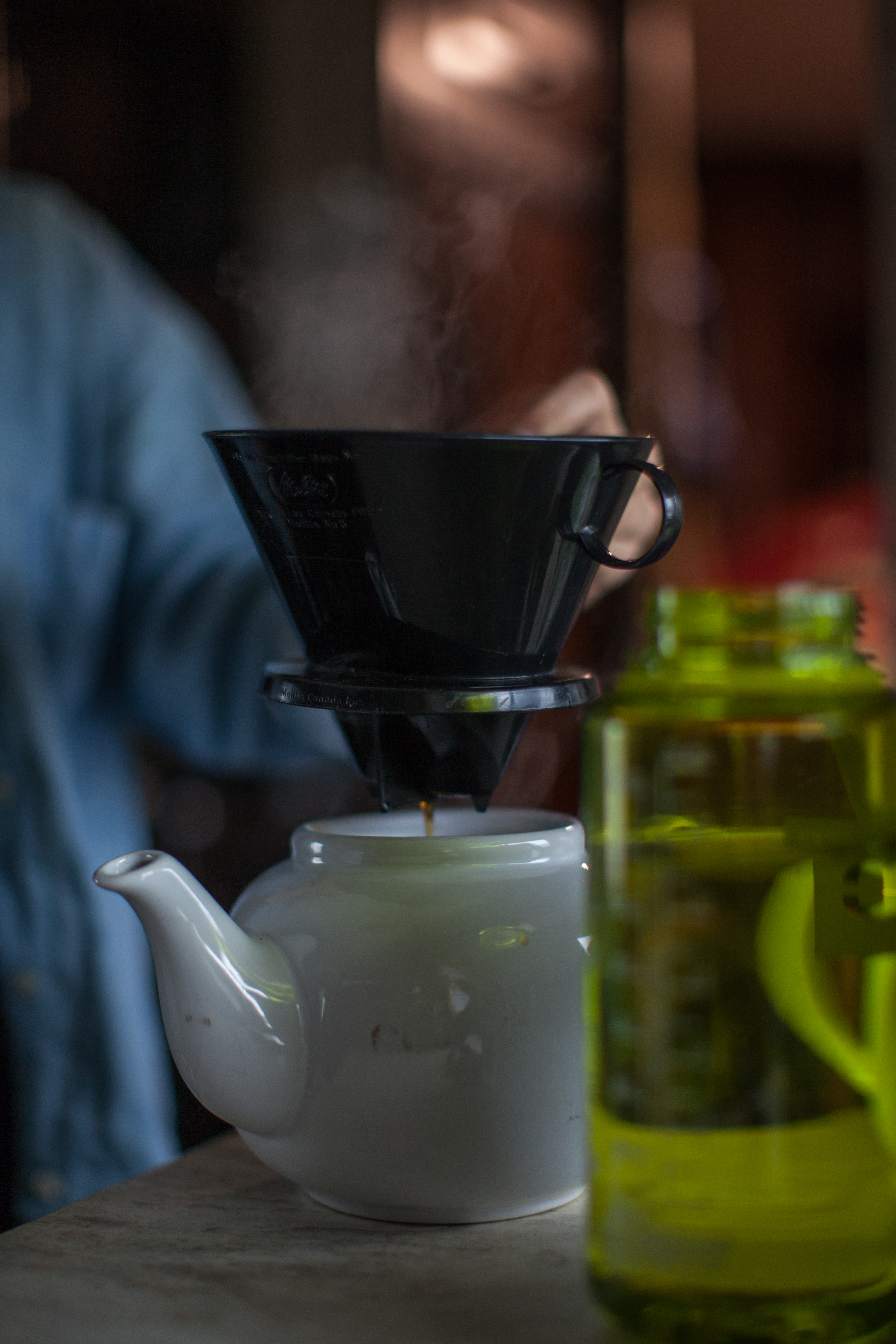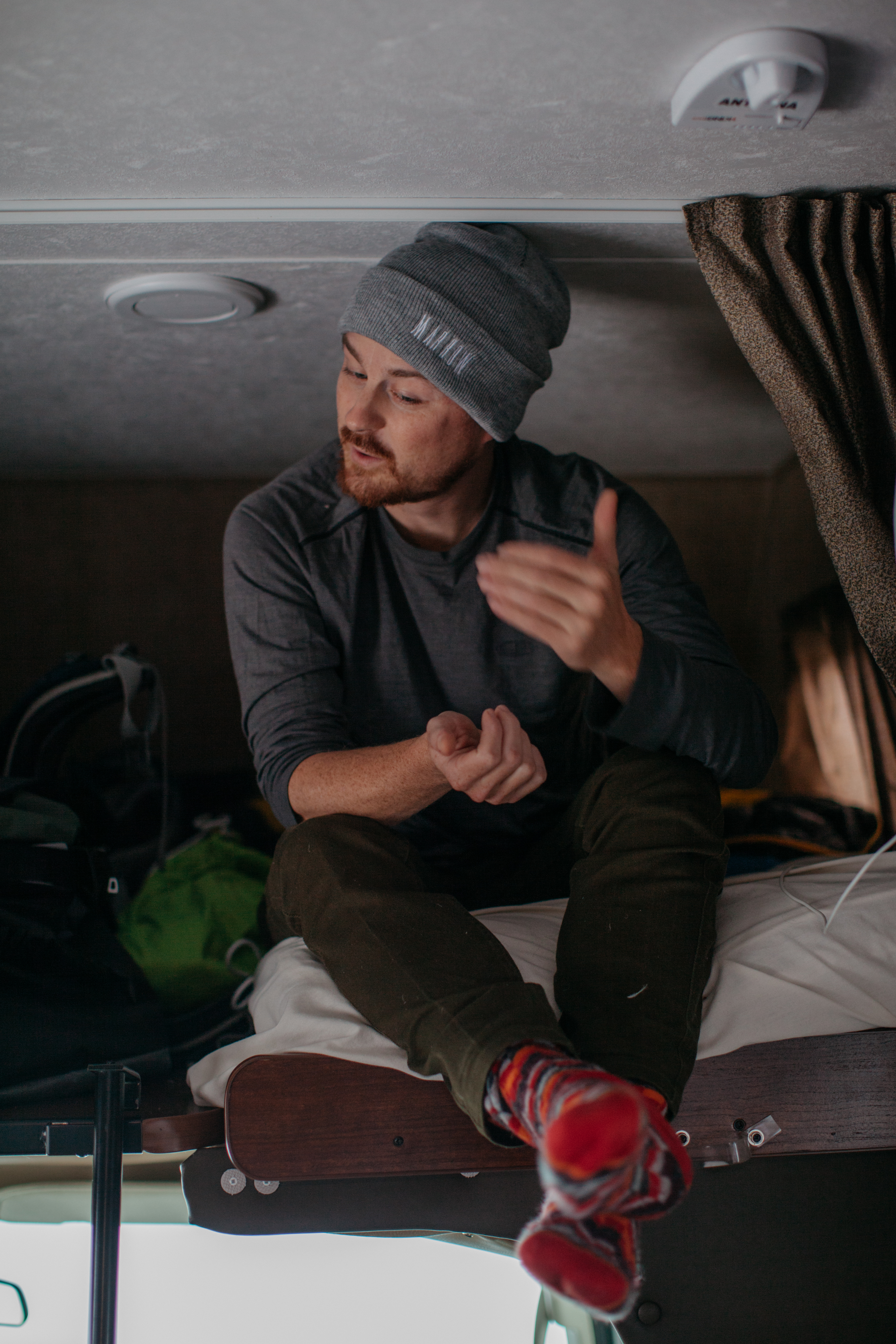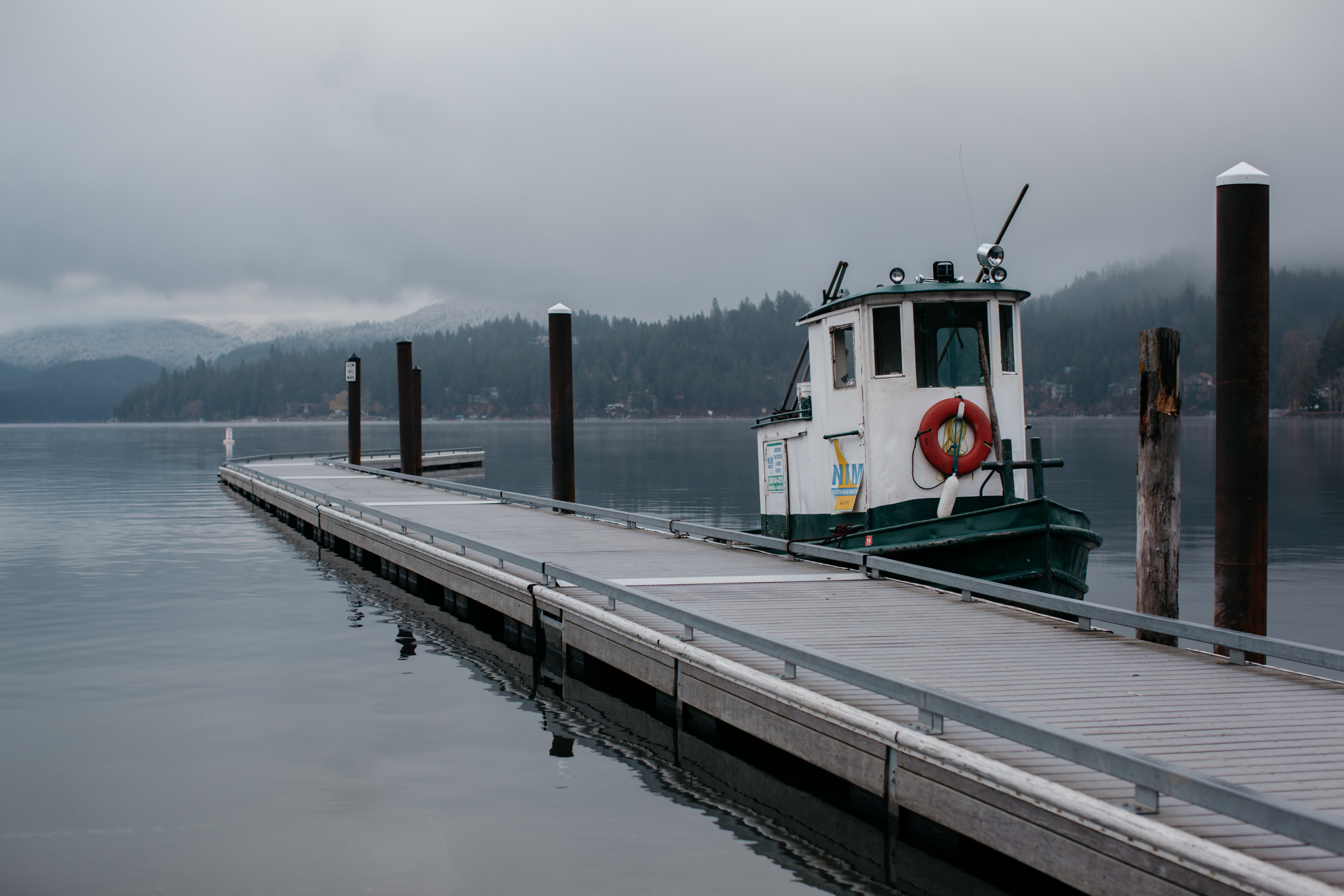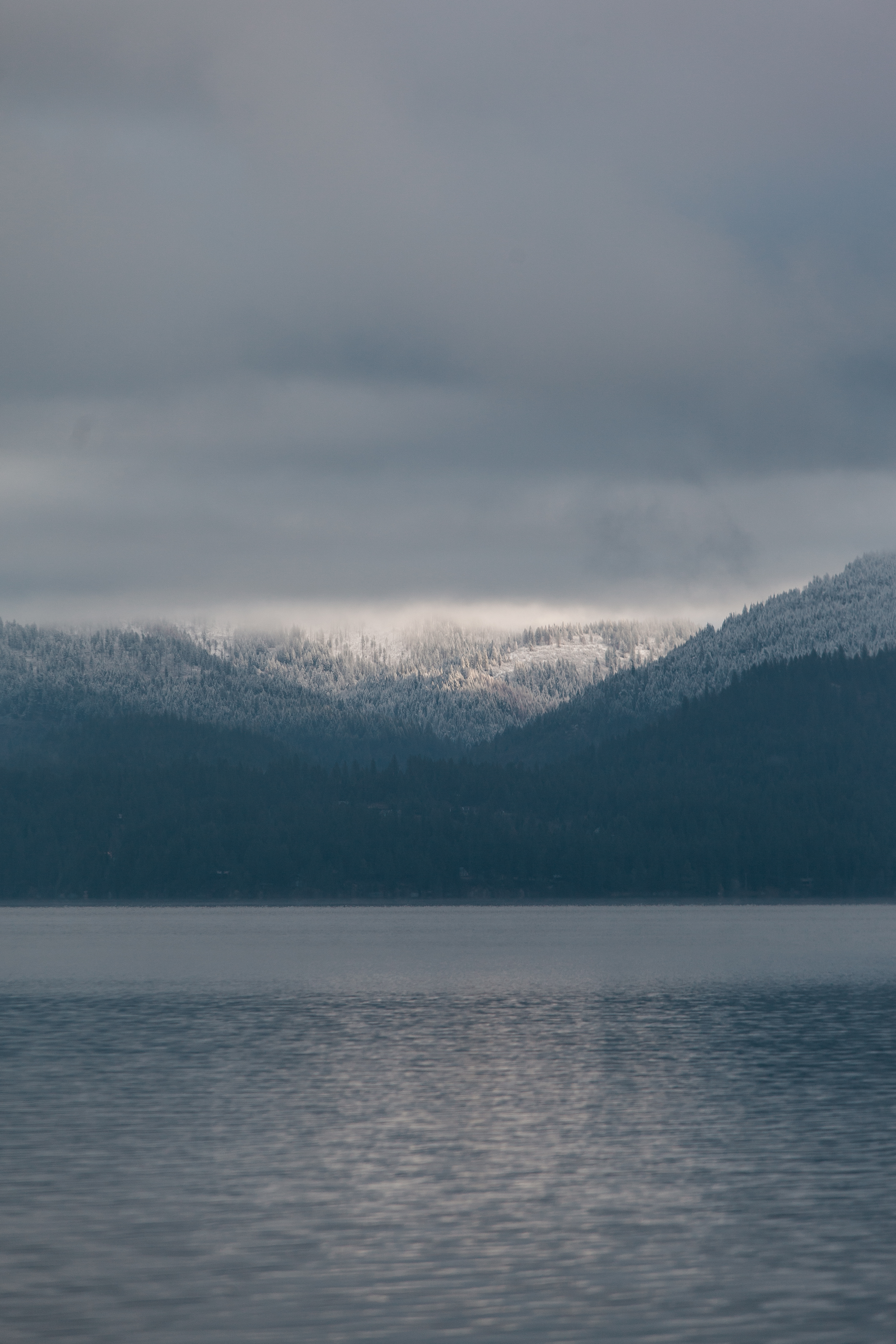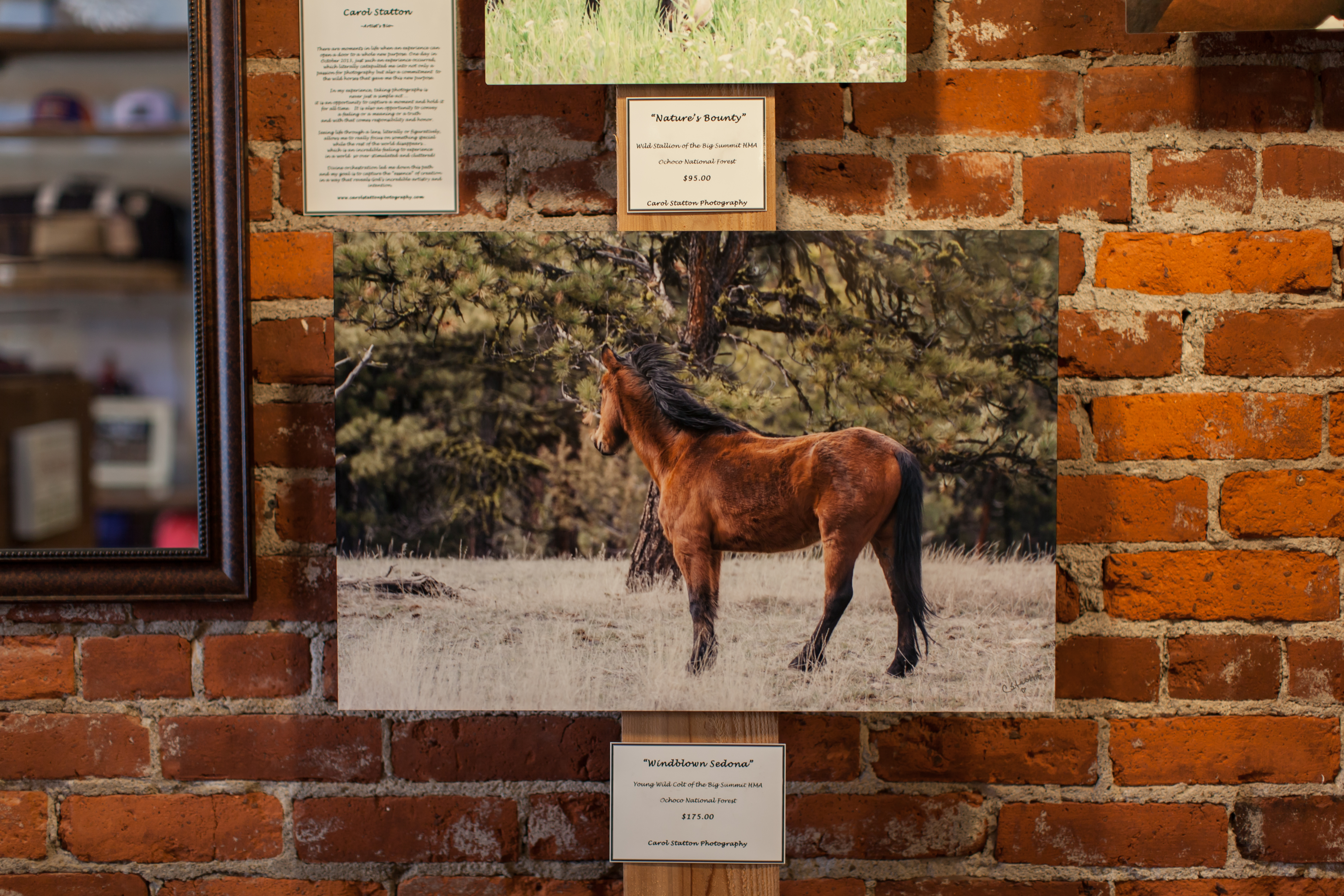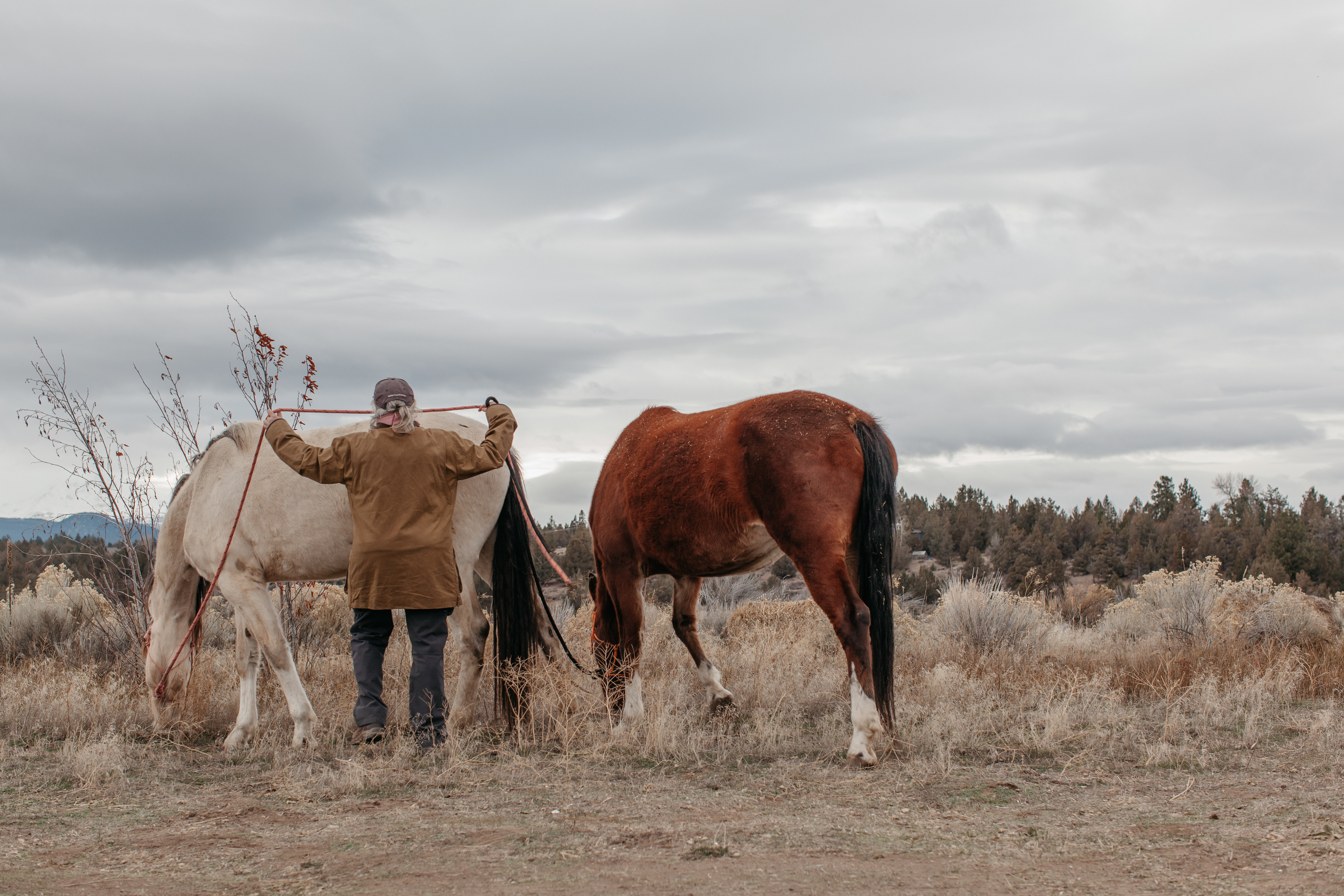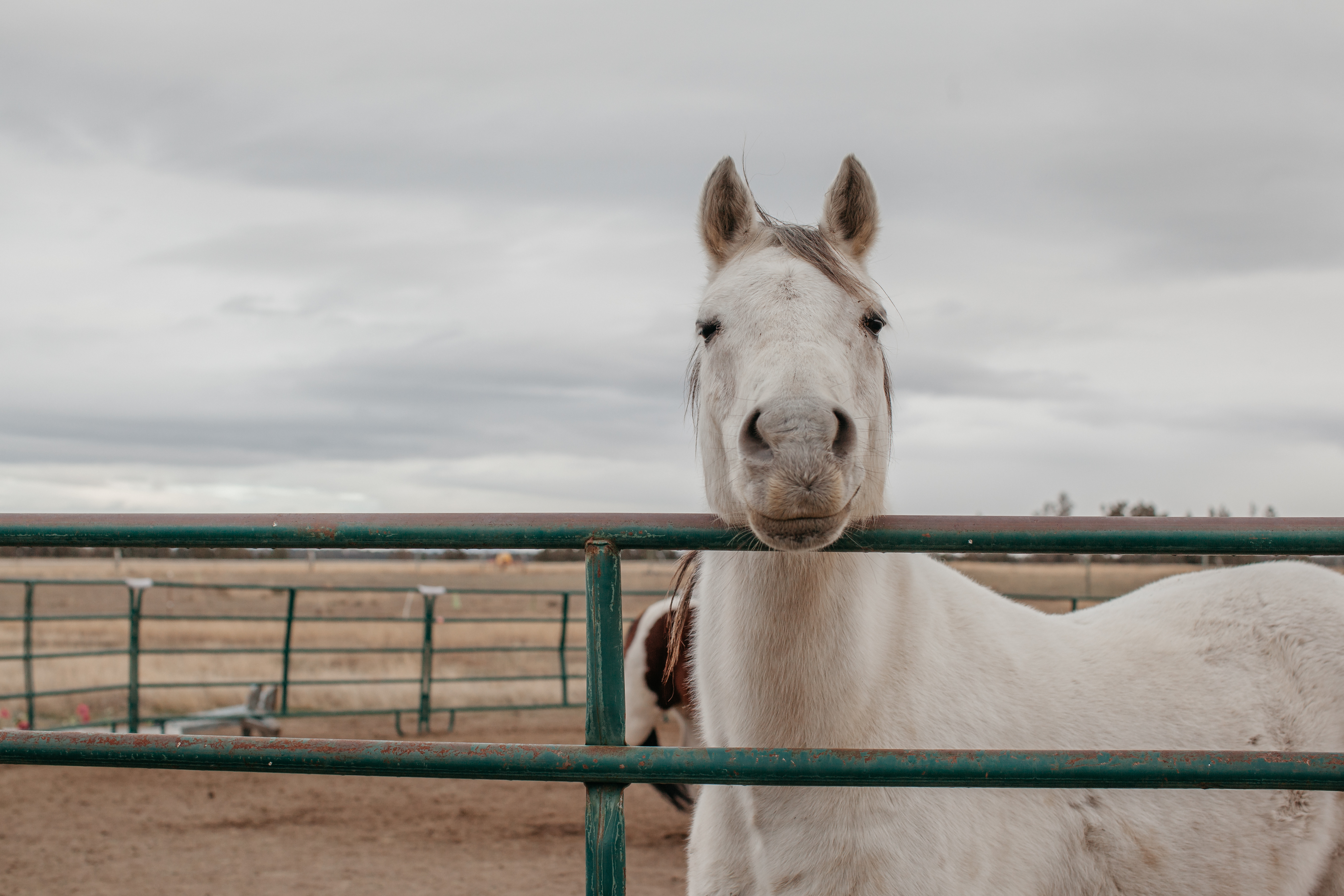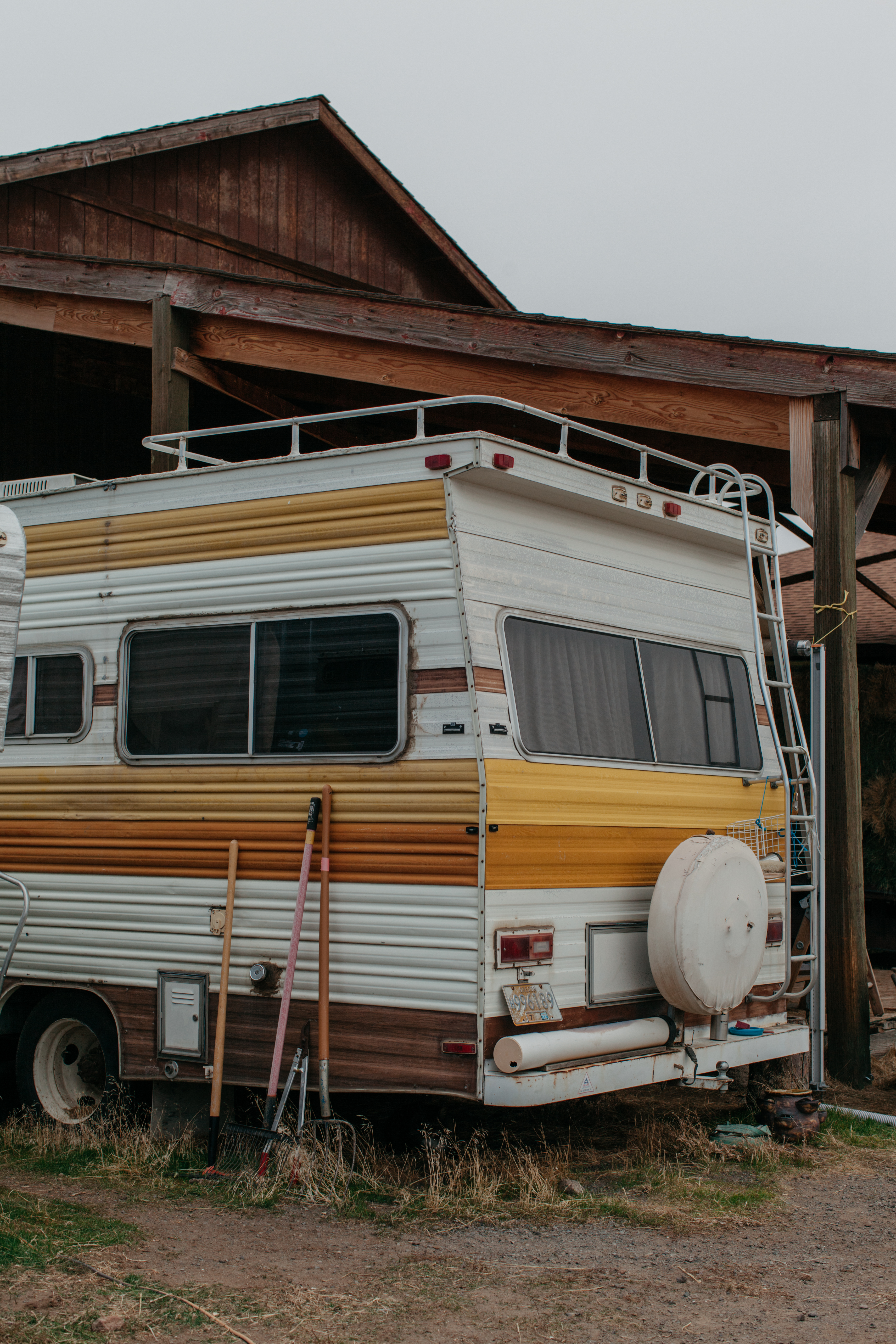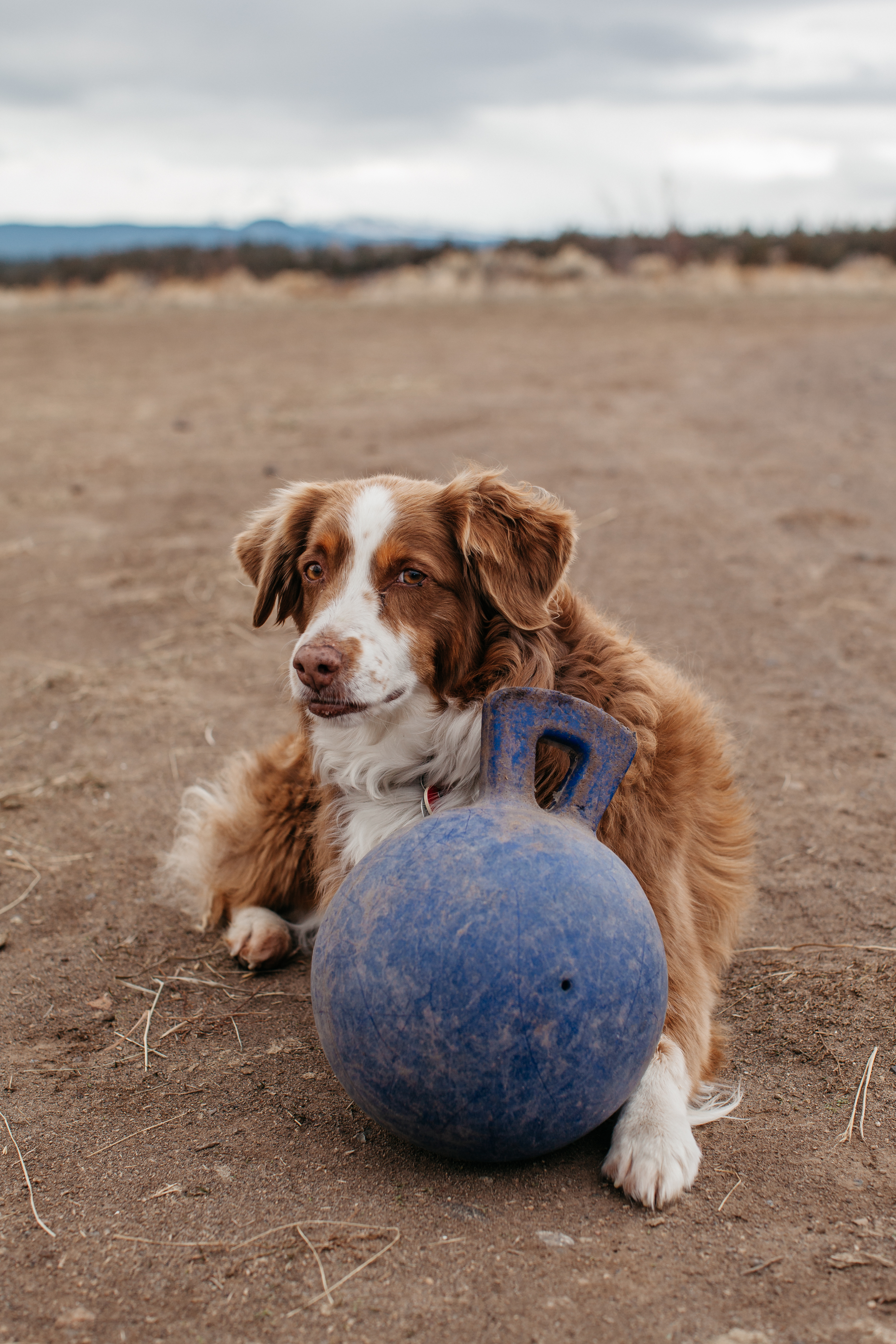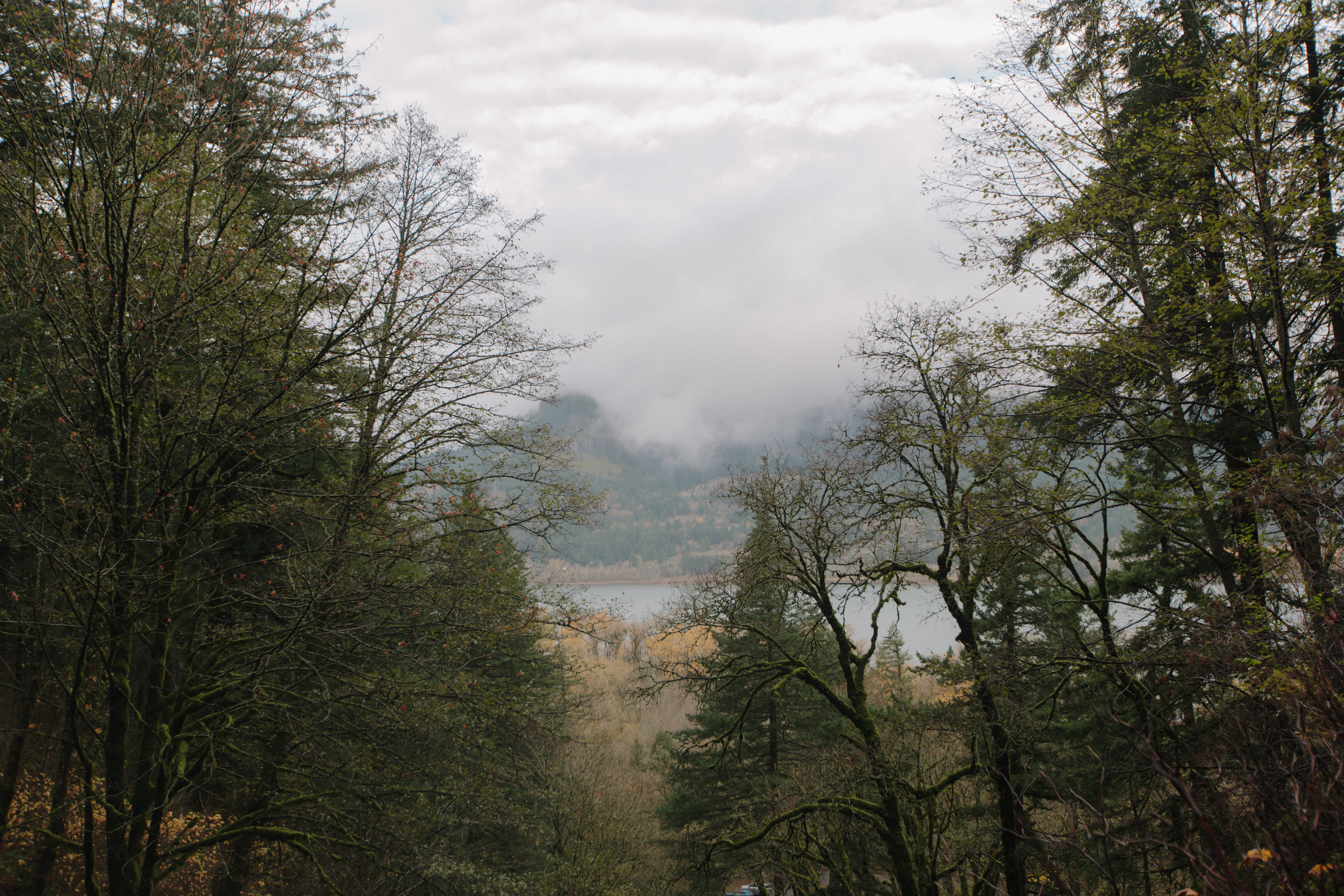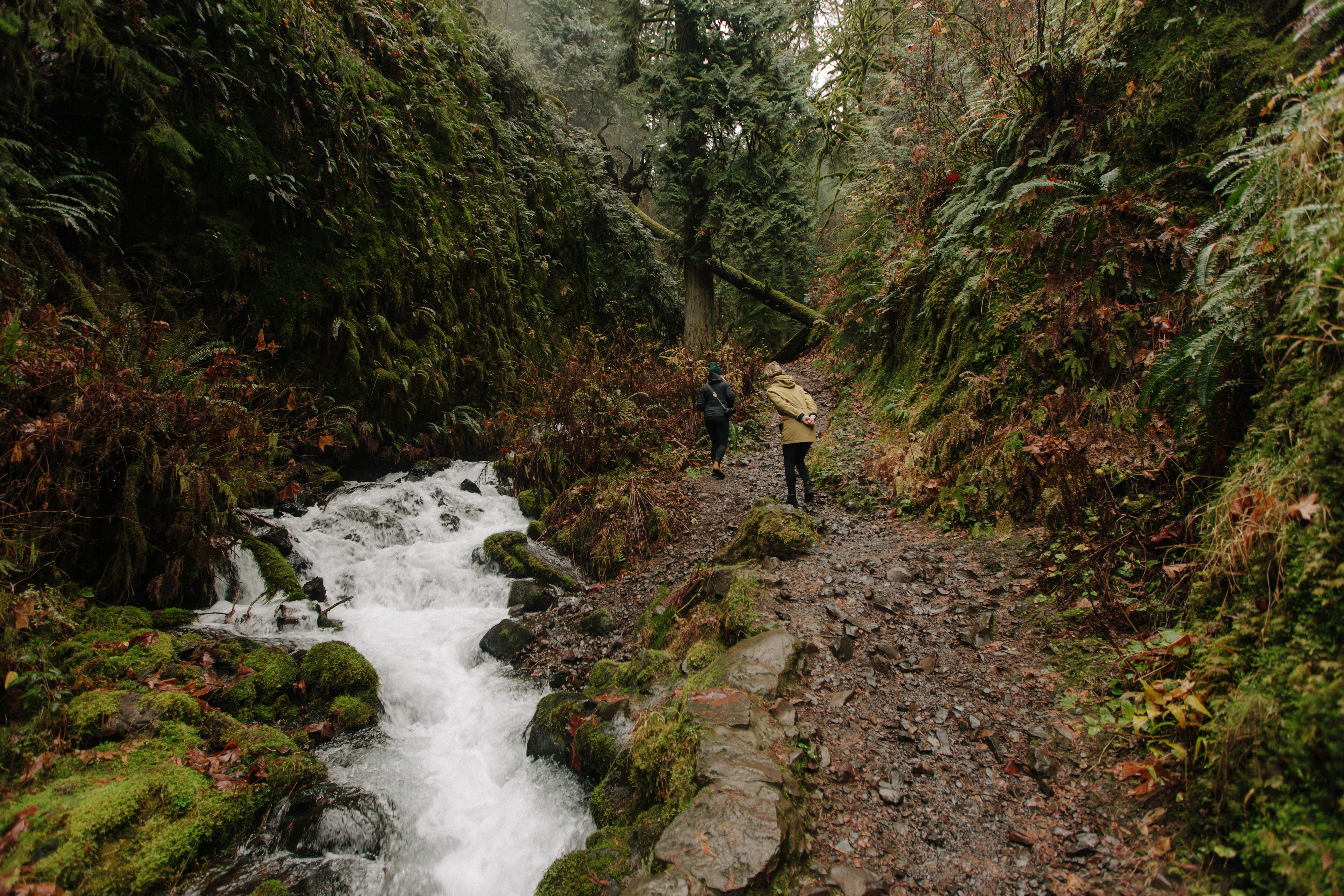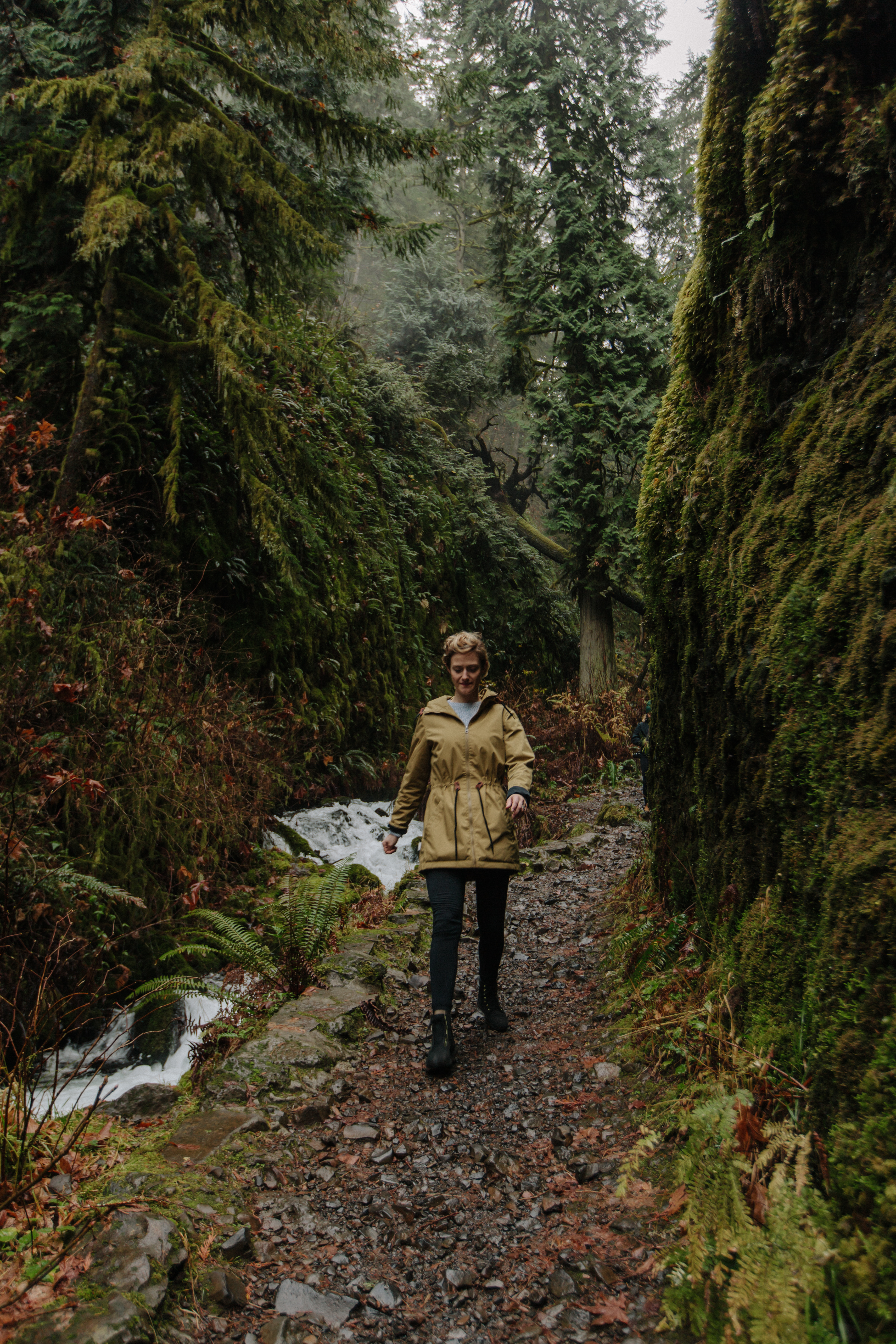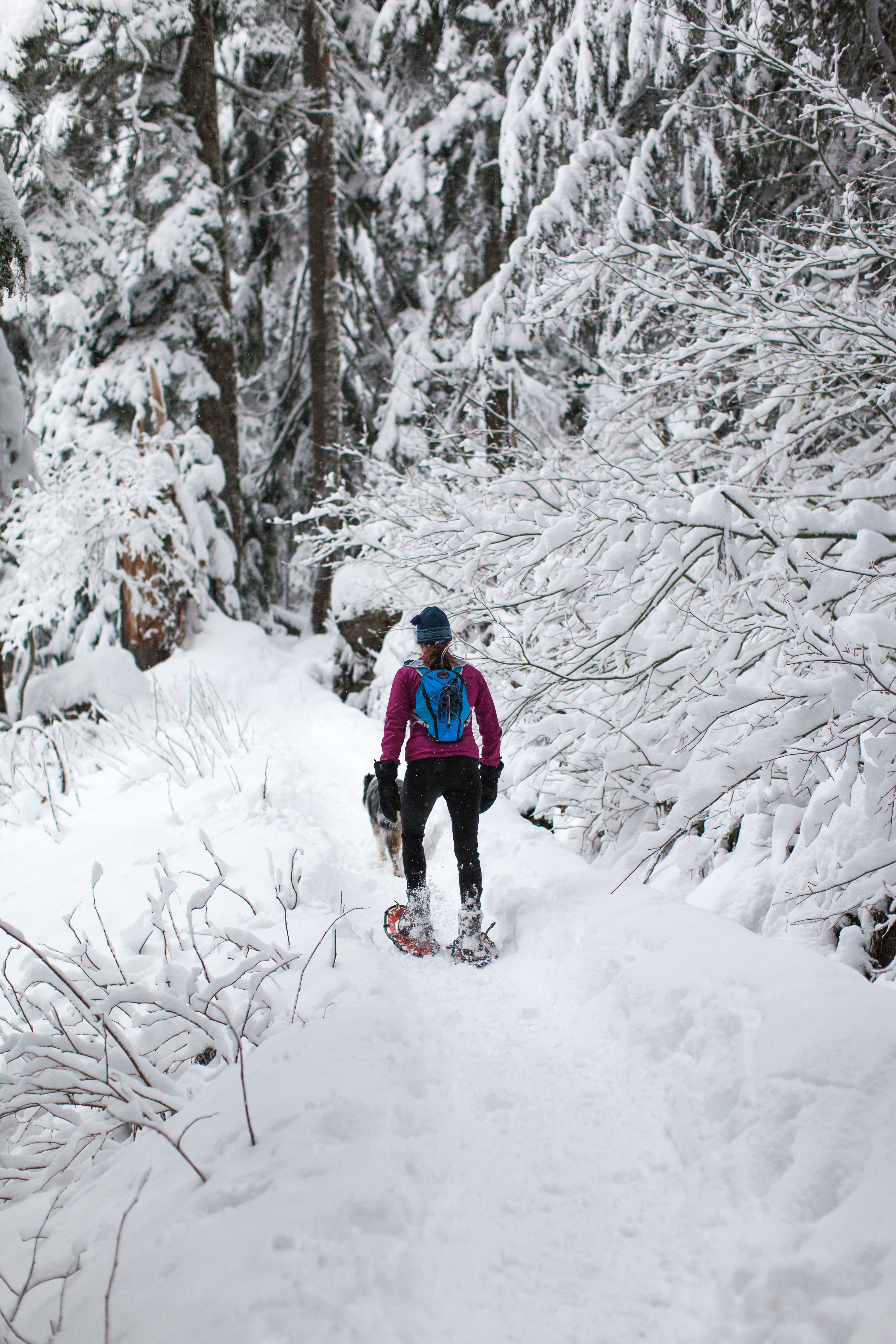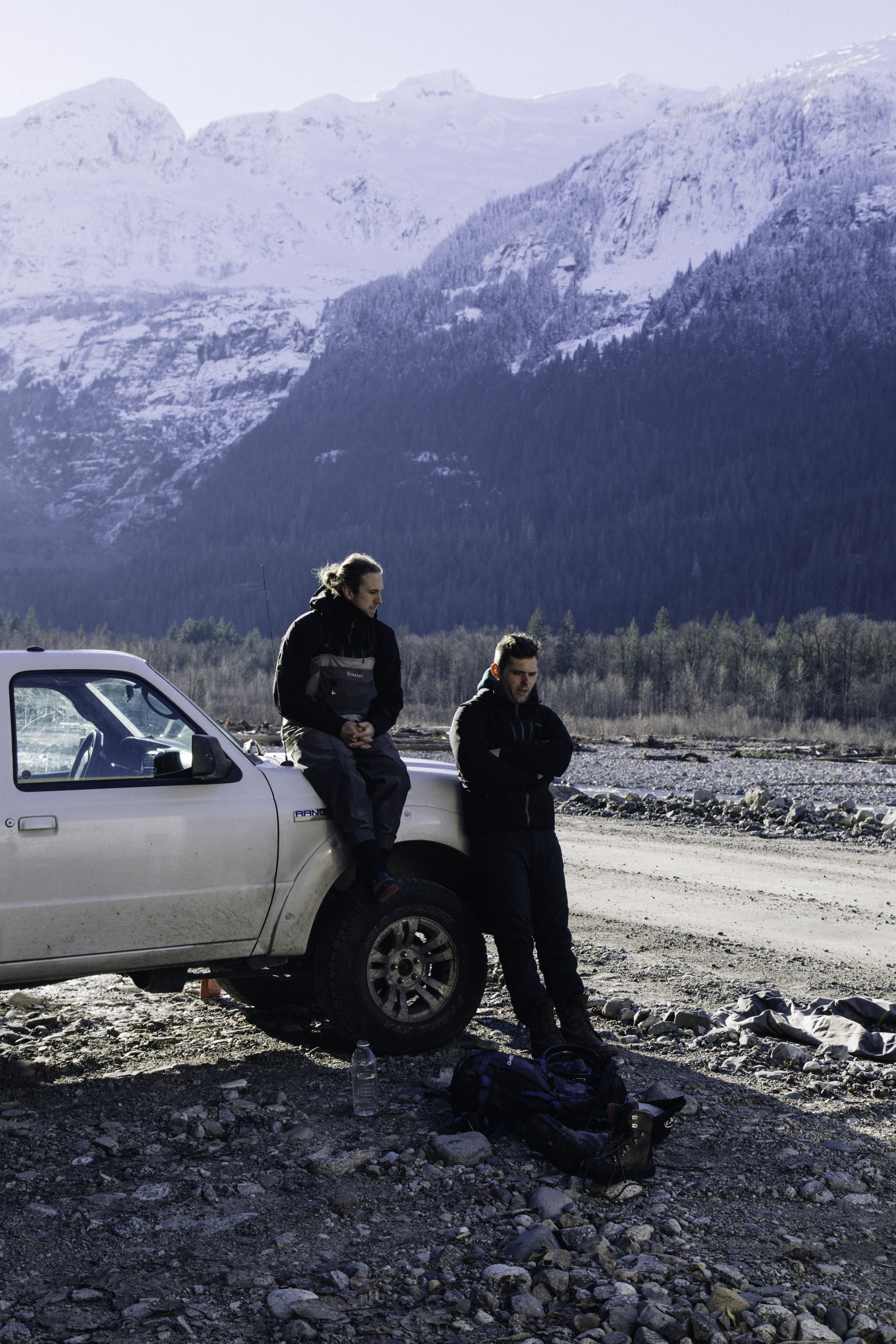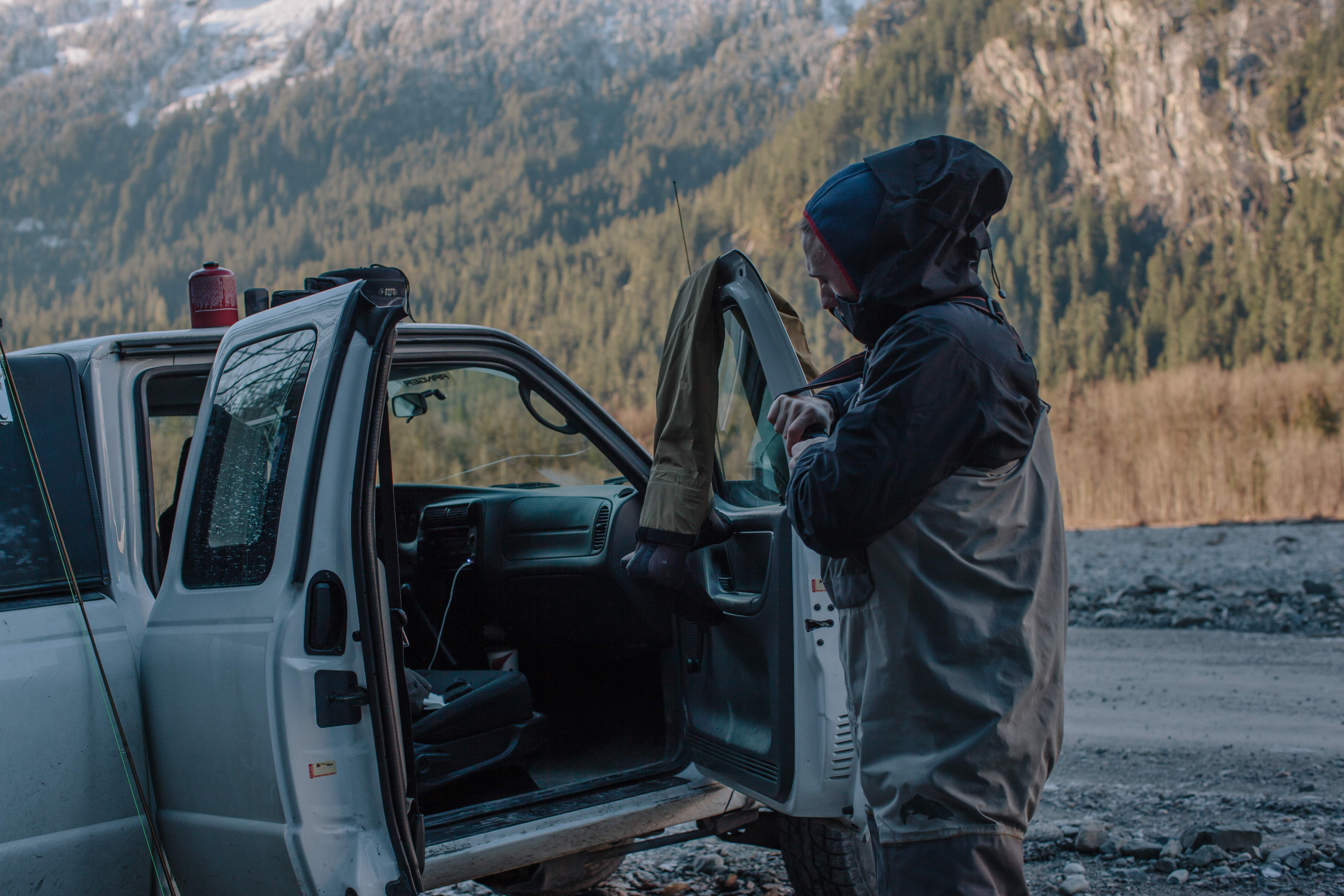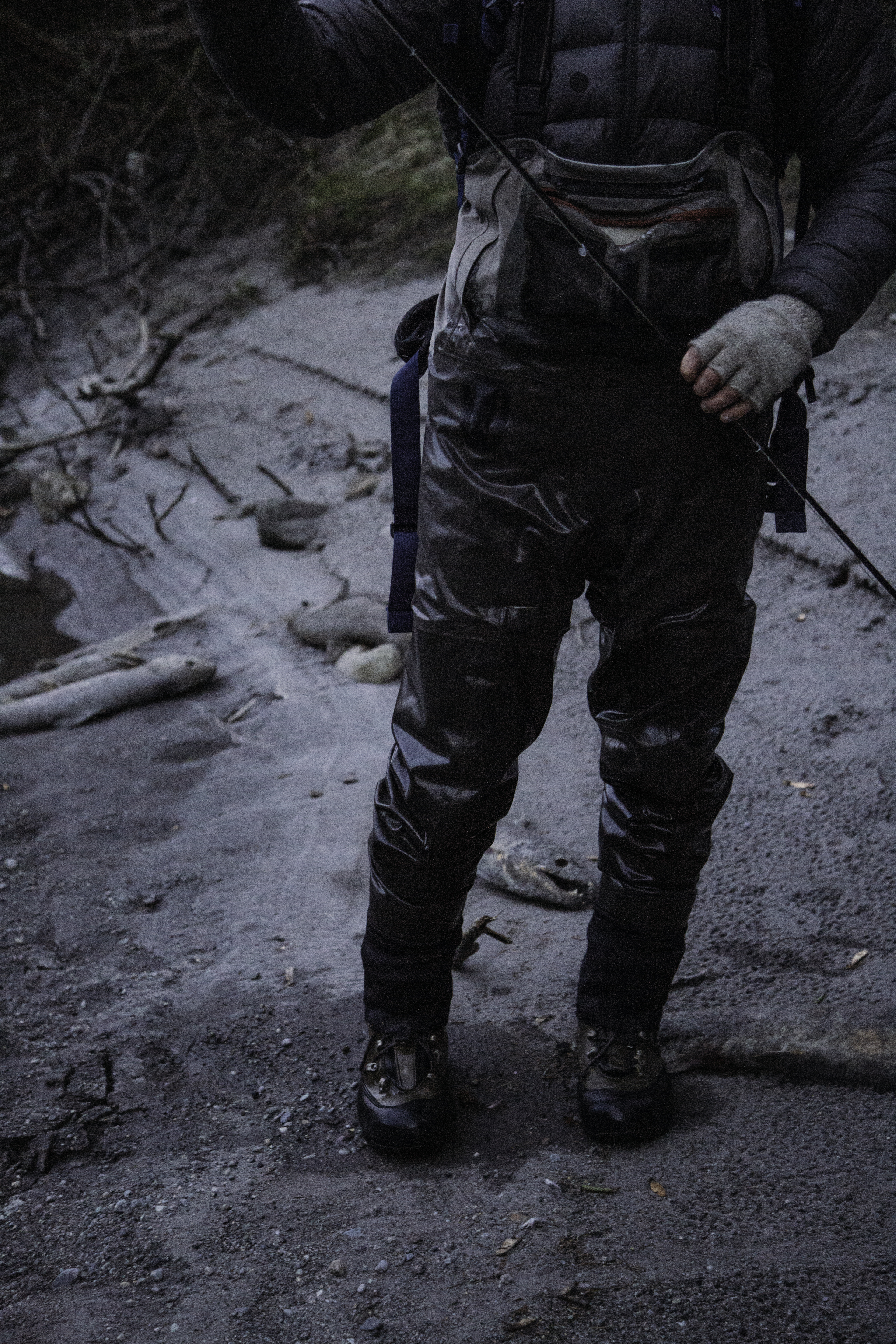BESIDE the road
A Coast to Coast Roadtrip to Reinvent Magazine Distribution
Stop #6
From the Prairies (Journey #5), we head to the mountains under cover of night. A quite impressive horde of stags greets us at Waterton Lakes National Park.
Indiscernible at this time, we have but our imagination to visualize the mountain scape that surrounds us. We make a fire and take out our camping chairs before retiring, excited with the day to come. Tomorrow, we will be discovering the park through the eyes and lens of photographer Jeffrey Spackman.
Day 16: Spackman’s Backyard
5:11 AM, our Co2 alarm goes off again, a whole 45 minutes before our actual wake-up call. The Co2 level is too high. Do we really emit that much heat? Nothing seems to stop it, so J-D unplugs the wire. Traumatic awakening. Julien cooks up some breakfast sandwiches as Elise prepares coffee. Despite the chaos, we have quite a pleasant morning.
We bundle up in our warmest clothes from head to toe, a lot like when we were kids. Outside, dusk is slowly revealing the mountain’s snowy peaks. Jeff Spackman and his friends pull up in a 90’s Jeep Cherokee ready to lead our hike. As a child, Jeff would spend most of his summers at the family cabin in the village of Waterton, which stands at the feet of the mountains. Before taking up photography, he had wandered these trails and had experienced most of Waterton’s nature.

“I know that people might really love the photo but for me it means so much more. I feel like I almost have a unique relationship with each mountain. I can tell you when I climbed them and who I was with.”
Today, we’re conquering Bear’s Hump, a short yet laborious ascent. The view at the top is apparently worth the sweat. Jeff and his friends set the tempo with swiftness. Clearly, they’d be able to do this hike with their eyes closed. J-D follows suit, discussing with ease. It’s another story for the rest of us. We’re in good shape, but our hearts are pounding. The fact of the matter is, nomadic #vanlife comes with a lot of sitting in the said van. Our egos slightly bruised, we’re determined to whip ourselves back into shape!

We reach the summit for daybreak, a thread of pink-orange light emerges from behind the majestic snow-covered façades. The decor is enchanting, but the fierce winds remind us not to get too lost in thought considering our high altitude. We struggle to shoot some footage, our fingers and faces quickly succumbing to the cold. These are the type of conditions Jeff works with to capture his beautiful photographs, a fact most people fail to acknowledge.
“_[It takes] a long period of time to see it all and to understand what’s happening with this light or this bird flying or whatever it is.” — Jeffrey Spackman
Jeff is not the type to snap a picture and leave. Mountains are complex and bearers of infinite knowledge. Photography is somewhat of a pretext to dive deeper into nature and observe it through different angles:
“Every time I see a rock, as small as it may be, I think of the grandiosity and complexity of all the elements that compose it.”
From our lookout, we see Waterton Valley, its luminescent lakes and Mount Cleveland, the highest peak within the Waterton-Glacier International Peace Park.

In 1932, the National Park of Waterton Lakes (Alberta, Canada) and Glacier National Park (Montana, USA) were united to form the world’s first “International Peace Park”.
The region’s landscape is simply stunning. The Prairies iconic fields merge with Waterton’s surprising morphology. The area bears its tagline well “Where the Mountains Meet the Prairies”.

The region’s topographic relief unveils an impressive diversity of fauna. Nicknamed the “Crown of the Continent”, one of the narrowest places in the Rocky Mountains, the area is home to more than 60 species of mammals, 250 species of birds, 24 species of fish and 10 species of reptiles and amphibians. Wolves, coyotes, cougars, grizzlies and black bears are amongst the most notorious predators. We cross paths with a herd of sheep who seems accustomed to human presence. Is that a good thing? Jeff’s opinion is mixed on the topic. For him, visitors need to be conscious of their impact on the fauna and flora. Unfortunately, all too often this isn’t the case. Humans leave their trace in the wild.

Jeff invites us to the Spackman family cabin, condemned for the winter due to avalanche hazards. The cabin seems frozen in time. Jeff’s childhood memories took place right here and we have no trouble imagining these moments, right down to the smell of pancakes he would enjoy with his family.
Jeff definitely redefines the preconception we may have of what an Insta-famous photographer can be with their “perfect” nature shots. The relationship he has with his subject matter is emotional; he aims to know it in depth. Photography is but a window to invite people to better comprehend and appreciate Waterton’s delicate ecosystem.

“Of all the places I’ve been, if I had to choose one place to continue to go to, it would always be Waterton.” — Jeffrey Spackman
On our way back, we stop at the Prince of Wales Hotel, a majestic castle-like hotel, to enjoy its unique viewpoint of the valley. We try to exit the RV, but the wind is so strong we struggle to open the door, even breathing out completely is challenging. It’s a similar feeling to sky diving, with both feet anchored to the ground.
The view is incredible. Our adrenaline kicks in and we become a little crazy. We run everywhere, we let the wind push us, we throw a few rocks (with fear of them boomeranging back into our faces!).

At sundown, we hit the road. After much debate and hesitation, we decide to skip Yellowstone in favour of crossing Montana & Idaho to make our way to Oregon. Tonight, we’re crossing the border!
“The customs officer: you gotta turn around, the border is closed, you have to pass by Fernie in BC.”
We backtrack 2 hours North. Like every night, or almost, Elise identifies the green areas on a map and we choose the one that seems furthest from the city and close to nature to spend the night. We sometimes strike gold and end up in a beautiful park, other times, it’s an underwhelming suburban plot of grass. Tonight, we’re lucky, we’re sleeping at Mont Fernie Provincial Park’s campsite.
Day 17: Lazy Sunday
Once everyone is awake, we enjoy a cozy breakfast altogether around a fire. We’re eating later than usual and we even offer ourselves the luxury of a dessert: pita bread with chocolate and coconut flakes, a spur of the moment invention inspired by our Prana nuts.
Before leaving, we clean up the area. Discarding our trash and unfortunately some of the left over by the previous campers.
Nearing the border, J-D catches sight of a fisherman in the river. With the imposing white mountains as a backdrop, we observe as he casts his line with elegance. We pull over, after all spontaneous & unexpected detours are part of our thrill. J-D slips into his fishing waders.
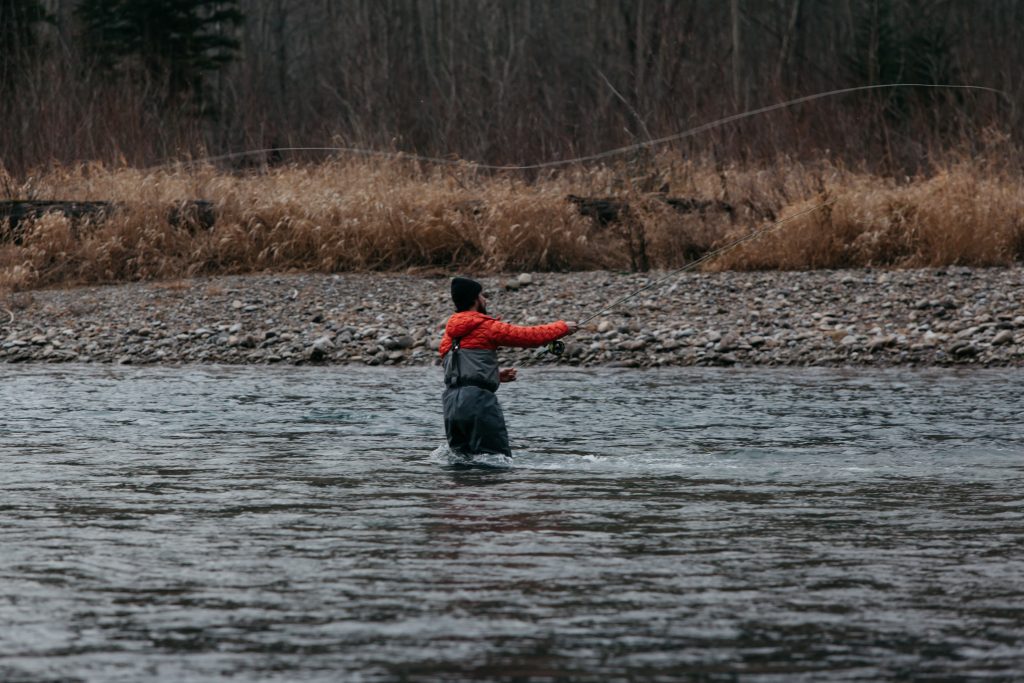

He doesn’t catch anything, but the simple contact with the river gives us a second wind. We are actually so pumped we decide to do an express cleaning of the RV all while listening to funky swing. Raymonde, our RV, is ready for customs!
Next stop: Montana & Idaho

Written by: Catherine Bernier
Translated by: Elise Legault
Crédits photo : Catherine Bernier, Julien Robert
Aboard: Jean-Daniel Petit (founder), Julien Robert (director), Catherine Bernier (content creator), Elise Legault (producer) and Chanelle Riopel
#LiveBeyondtheBend
Stop #7
Day 17: Welcome to Montana!
At the American border, we’re expecting a full search of the RV which we prepared for by doing a quick cleaning blitz in Alberta (Journey #6) .
Customs officer: Do you have any produce?
Us: Yes, we have tomatoes, asparagus, limes, an avocado and a pepper.
Customs office: You have to hand over the tomatoes, limes and avocado. The rest can stay.
Julien: Are you making guacamole sir?
The customs officer laughs. He takes our tomatoes, limes and avocado hostage and we proceed. Hello America.
We’re enamoured by Montana’s wide valleys, dominated by the Rockies and vast plains. Alongside Alaska, Montana is one of the States with the lowest population density, leaving a lot of room for it’s wild nature.
Montana earns a few points right off the bat for having an accessible gray and black tank dump station 24/7. We’ve come to learn that they aren’t that frequent, especially at this time of the year. Chanelle, Elise and myself use this opportunity to get some groceries. When three girls shop together, the cart ends up being pretty much full of greens! Speaking of food, Montana’s economy mainly revolves around cereal farming, a practice that goes hand in hand with cattle grazing. This fact opens up a discussion that goes way beyond Montana itself:
– What are the true impacts of monoculture on the environment?
– Could monoculture be at the source of illnesses spread amongst livestock?
– What would these cultivated fields look like had nature been left to itself?
– What would happen to the agricultural lands if they were sold, turned into condo or malls?
We debate in our mobile living room and ponder on the potential alternatives. What about permaculture? Buying local? Microagriculture? Organic meat only? Vegetarianism? Every morning, we basically re-invent the world before even finishing our cups of coffee.
ps. we’re such Montrealers that we’ve hauled our St-Viateur bagels all the way to the U.S.!
We arrive at the Whitefish Montana Camping, a spot recommended by our friend Alex Strohl. It’s pitch black, discovering the landscape will be a nice surprise tomorrow morning.
DAY 18: Suppin’ on the Whitefish Lake
The morning is cold and the sound of the train, which could be heard all through the night at about a 30 minute frequency, is still resonating in our heads. We take in our surroundings, the mountains are reflected on the lake whilst the sun shines upon their snowy peaks.
An early bird, Elise returns from her morning walk. J-D and I blow up the stand-up paddle board with haste. J-D takes off first, in the meantime, I painstakingly slip into my wetsuit (it’s always a challenge).
When you’re five in an RV, each person escapes in their own way in order to refuel. In the middle of the lake, I lose myself amongst the mountains that surround me. I lie down on the board and float for a while.

In the city of Whitefish, J-D, Chanelle and Elise knock at a few doors of specialized boutiques to distribute the magazine. Julien and myself work from a café that had a very credible après-ski vibe.
Ready to cross over to Idaho, we stop at the biggest souvenir shop any of us had ever seen. It’s a a museum of gadgets and doodads such as synthetic grass sandals (wait, what?), a talking moose head, a giant aquarium of live trout, Montana themed pyjamas and an infinite variety of plastic toy guns… We spend close to an hour entertaining ourselves in this very over-the-top clichéd universe. A genuine contrast to the tranquility of Whitefish Lake.
Day 19: From Idaho to Oregon
While in Idaho, we attempt to find a place to sleep. Like usual, we choose a green area pinpointed on a map. We find a park not too far from the city. Arrived at the destination, the area is absolutely covered with Christmas lights. If you could only see how bright the park was, impossible to get some shut eye there! We leave the city and settle for a suburban park close to a lake.
At sunrise, we’re glad we picked this spot, the temperature is mild & humid which is pretty comforting. The mist on the lake and the dense forest is a tease to what’s in store for us in Oregon.
We drive all day, non-stop, reaching Oregon’s border. With dusk upon us, we pull-over on a hillside to enjoy the spectacular view. Mount Hood and Mount Rainier, two stratovolcanoes, aren’t too far in the distance. We sip on a beer while taking in the moment, a hard to beat 5 à 7!
We stop for the night at Smith Rock State Park, a region that somewhat ressembles a desert in the center of Oregon. We’ve been told that the park is a paradise for climbing enthusiasts. For now though, we contemplate the panorama of stars before us. Julien, J-D and Elise make use of their time to prepare the biggest birthday card Eliane, our graphic designer, has probably ever received thanks to a bit of light painting. Running around in the dark, we didn’t realize that we were in fact close to a cliff, something we discover the following morning…
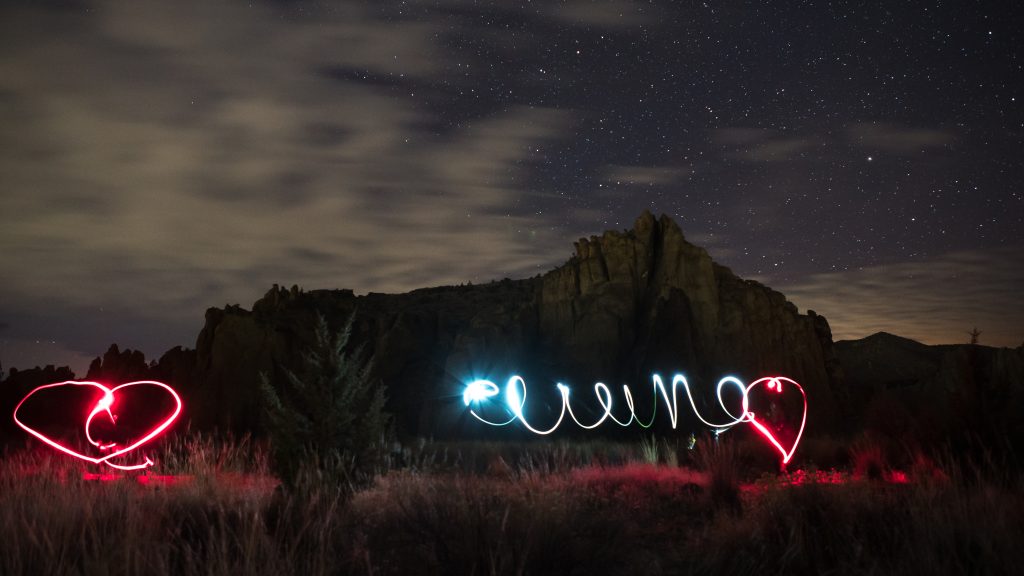
Running around in the dark, we didn’t realize that we were in fact close to a cliff, something we discover the following morning…
Tomorrow: we ascend one of the Canyons in Smith Rock State Park, before heading to Bend, Portland and Seattle.

Écrit par : Catherine Bernier
Édité par : Catherine Métayer
Crédits photo : Catherine Bernier, Jean-Daniel Petit
À bord: Jean-Daniel Petit (fondateur), Julien Robert (réalisateur), Catherine Bernier (rédactrice, photographe), Elise Legault (productrice), Chanelle Riopel.
#Lanaturerécompenselesbraves
Stop #8
Driving through Montana, Idaho & Oregon (Journey #7), the scenery evolves quite a bit, from flat lands to damp forests all the way to hostile glacier peaks. These regions have been home to American bisons (commonly known as buffaloes) for centuries, way before any white man had set foot in this part of the world. Today, there are only a few hundred buffaloes left…
Day 20 : Smith Rock State Park
Smith Rock, considered one of the 7 Wonders of Oregon, greets us warmly in the morning. There are about 300 sunny days year round here and we aren’t about to miss out on this one! Let’s go explore!
In the depth of its valley, we could easily imagine a Far West movie being filmed here, perhaps a battle between natives and conquering outsiders.
Nowadays, the only thing being conquered here are the cliffs. Smith Rock State Park is a playground for climbing enthusiasts. The tuff and basalt cliffs make it an ideal location for any type of climbing (sport, trad, top rope) at a variety of difficulties. Head’s up to mountain bikers, the park also has a few trails that would no doubt be of interest! For road bikers, have a look at the Sisters to Smith Rocks Scenic Bikeway itinerary, it’s not bad at all!
During our hike, we come across a handful of daring climbers. Although this sport isn’t for the faint-hearted, we’d all like to give a try some day! The freedom felt once you’ve reached the top must be out of this world. We take in the present moment, our feet sturdily grounded.
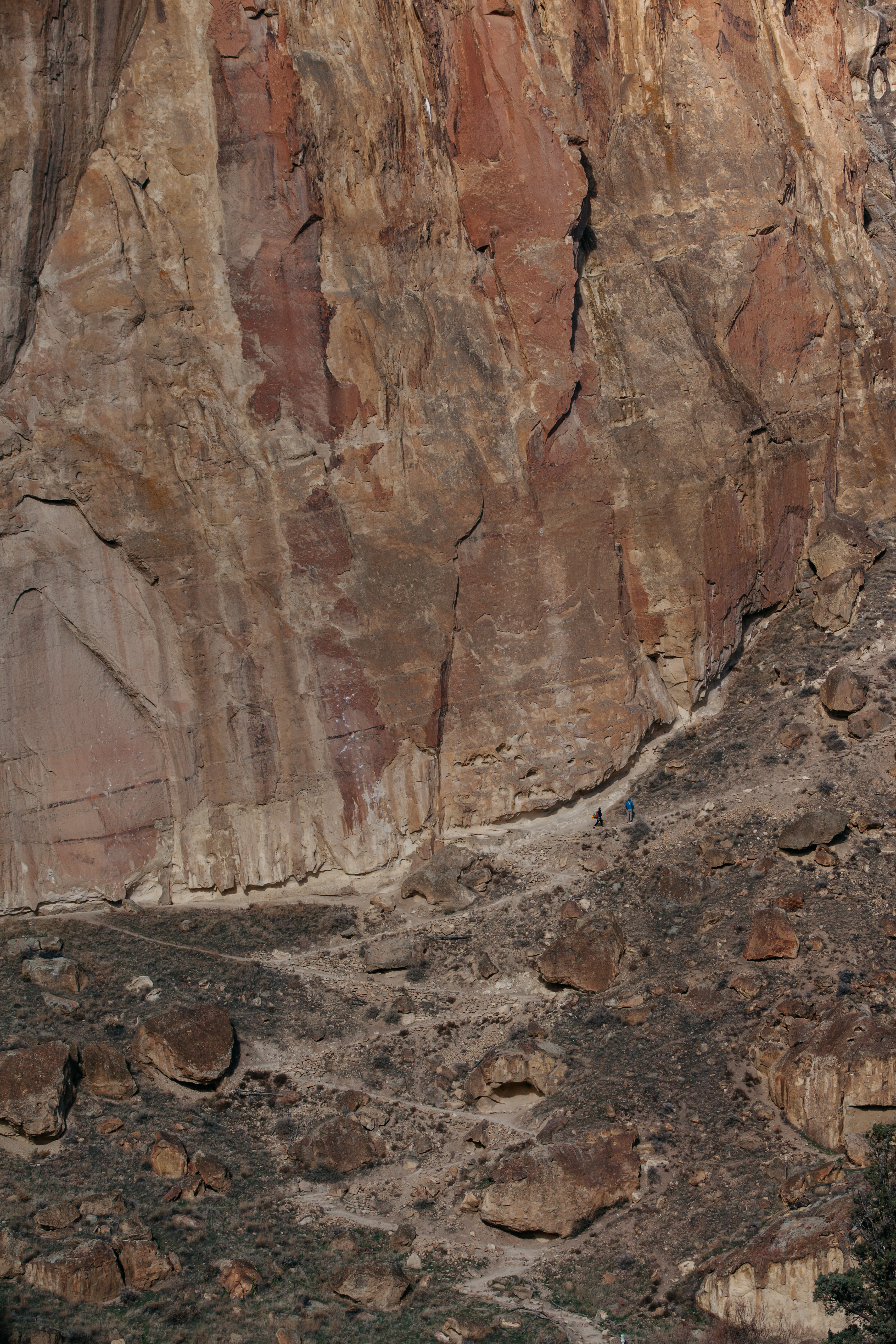
Reinvigorated by the fresh air, we leave for Bend, a charming town in Oregon where we will meet our equally charming editor-in-chief, Catherine Métayer. She will be with us for a few days to live the RV life and do some on the ground distribution.
In Bend, Catherine M. invites us into the home of a friend who kindly lent her his house. Reunited, we have dinner together and savour a well deserved bottle of wine!
Day 21: Meeting the community
Catherine M., J-D and Elise knock on the doors of Sunnyside Sports, Powder House, The copper Pot Coffee and Botanicals, Spoken Moto, Gear Peddler, Fly and Field, Stillwater Fly Shop and Forge humanity to share the magazine. Meanwhile, Julien and I stay ‘home’ to do some laundry and more importantly keep writing and editing!
At diner, we catch up on the day’s events:
– Cath M.: We met a few very interesting people today, notably Amy, one of the founders of Forge Humanity, a shop with a very unique merchandise offering. The boutique only holds brands that give back to a social or environmental cause. We can meet them tomorrow if we’d like!
We call Amy to find out if they’d be interested.
Day 22 : Forge Humanity & Mustangs For The Rescue
10AM: Amy & Tiphane, founders of Forge Humanity, welcome us with bubbly and locally brewed beer.
– In Bend, this is how we greet out guests, it’s never to early to celebrate!
All right! We accept the bubbly filled mason jar with no complaint, it’s a great way to ease into the day.
Beneath the store’s chill atmosphere and well curated aesthetic lies a purpose-driven mission. Amy and Tiphane along with Maximus and Foster, their two dogs, explain:

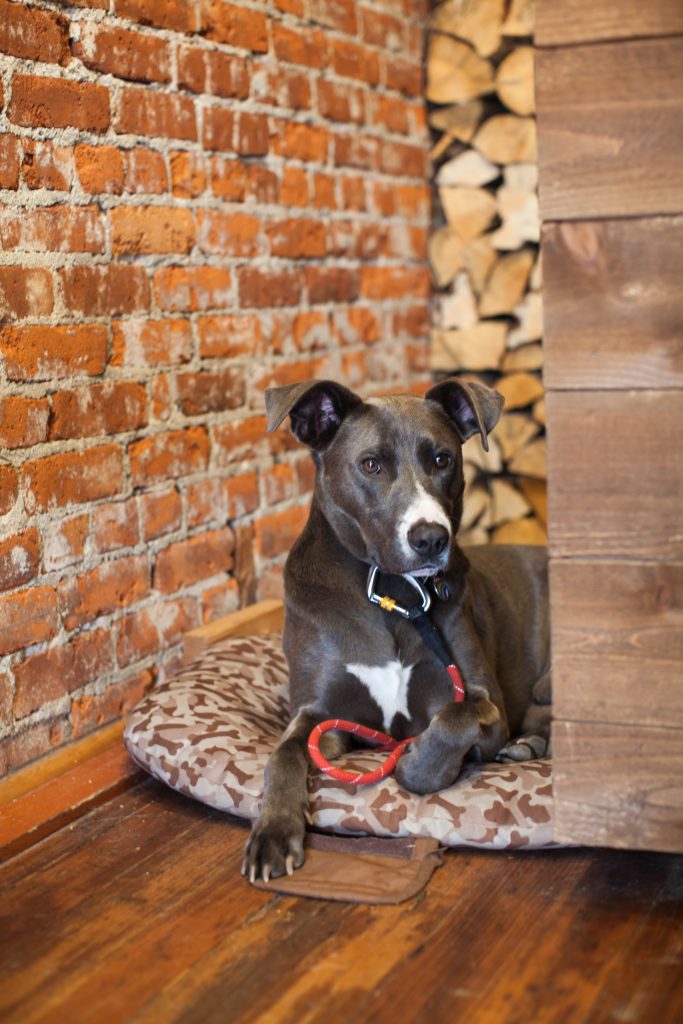
– Amy: Forge Humanity was created when we realized that we wouldn’t be able to help everyone, but everyone can help someone.
– Tiphane: That’s why everything we find in our store gives back to a cause. Purchasing an item here means you are supporting a local or international organization. For example, a percentage of every Esperos bag sold goes to Nobility, a nonprofit organization dedicated to improving education in Kenya. They’ve built some one hundred classrooms so far.
– Amy: Other brands we carry give back to the environment. United by Blue remove one pound of litter from bodies of water for each item sold. They’ve orchestrated more than a hundred clean-ups across 26 States!
For Amy & Tiphane, giving back is at the core of their values. Before leaving, they offer us hats from their house brand. They mention that the profits generated by these sales go towards an organization called Mustangs To The Rescue. This NGO saves horses who have been neglected or abused, they also offer support for owners who wish to train their horses in the right manner.
Amy and Tiphane encourage us to meet Kate Beardsley, ‘the woman who talk to horses’.
An afternoon at the ranch with Kate
The horses we meet at the ranch exude health and happiness. Through rehabilitation, they’ve built up their self-confidence and learnt to socialize with humans again. This can take time, but Kate tailors her approach to each one of them. Her understanding of their primal instinct creates a bond which allows her to re-educate the horses and often re-connect them to their once wild self.
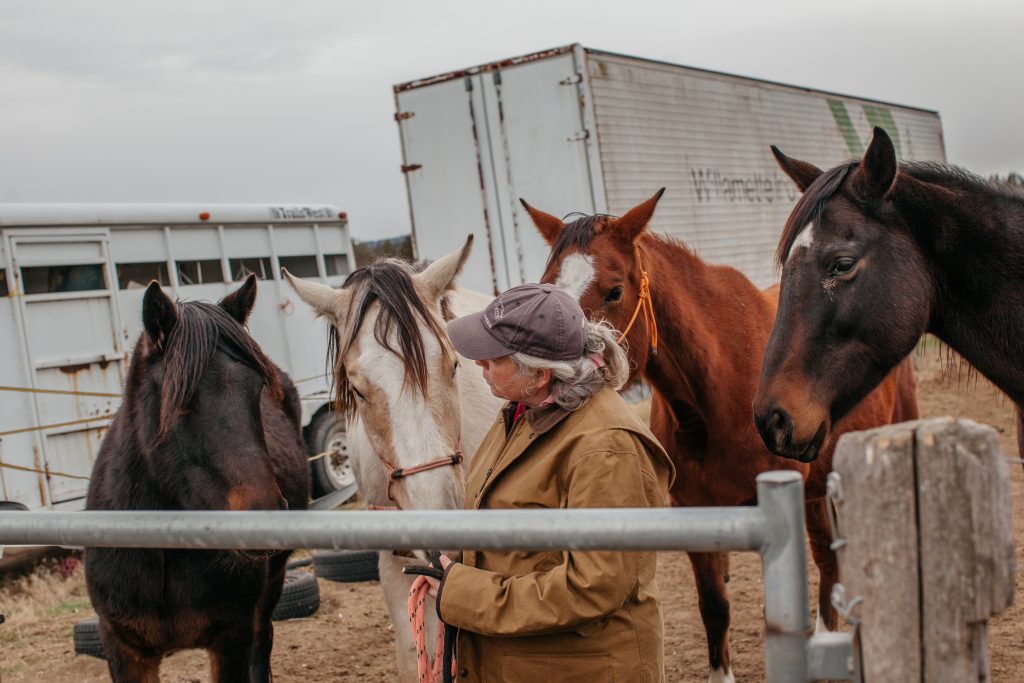
Kate dedicates her life to these horses. She lives on the premisses in an RV to remain close to them. Being very humble, she financed her operations herself, mainly by selling off some of her photographs. A friend eventually convinced her to register as nonprofit organization. She’s since benefitted from local support and volunteers.
Her mission and dedication truly resonated with BESIDE’s values.
Day 22 : Portland
We reach Portland, a city known for its outdoor community, divine coffees and artisanal microbreweries. We don’t waste time with distribution and a pay a visit to Portland Gear, Montbell Portland, Tanner Goods Portland, Bridge & Burn Flagship, Snow Peak Portland, Next Adventure and Mountain Shop.
We’re spending the evening at Poler Stuff for our official West Coast launch! The Poler team welcomes us with craft beer. A handful of people made it out to the store to purchase the magazine. With Eliane rejoining the troop and Catherine M. still around, we decide this is a good night to let loose and have some fun. We are, after all, going to be 7 in the RV tonight, might as well throw a party!
Which we successfully do. We spend the night indulging in canned wine (it’s surprisingly better than it sounds) and dancing to 80’s music.
Day 23: a dose of greenery please!
We make our way to Multnomah Falls about 30 minutes outside of Portland for a refreshing hike. We take the first trail we stumble upon. The vegetation is lush and our tired complexions are reaping the benefits of the forest’s humidity. A little bit down the road from us, we discover the park’s main attraction: a much bigger and impressive waterfall. Eliane informs us that it’s one of the most photographed waterfalls on Pinterest, most likely due to the fact that it is so easily accessible. The area is crowded with people who take selfies and leave. Honestly, we much prefer earning an amazing view rather than share one like this with hundreds of other people.
It’s true that these types of attractions bring people outdoors, but if interactions with nature are limited to a few digital pictures, can we say that this type of connection is real? It’s a valid question for all, especially in the era of social media.

Tomorrow promisses to be a change in landscape. We’re going from Canyons and forests to Washington States fresh powder!
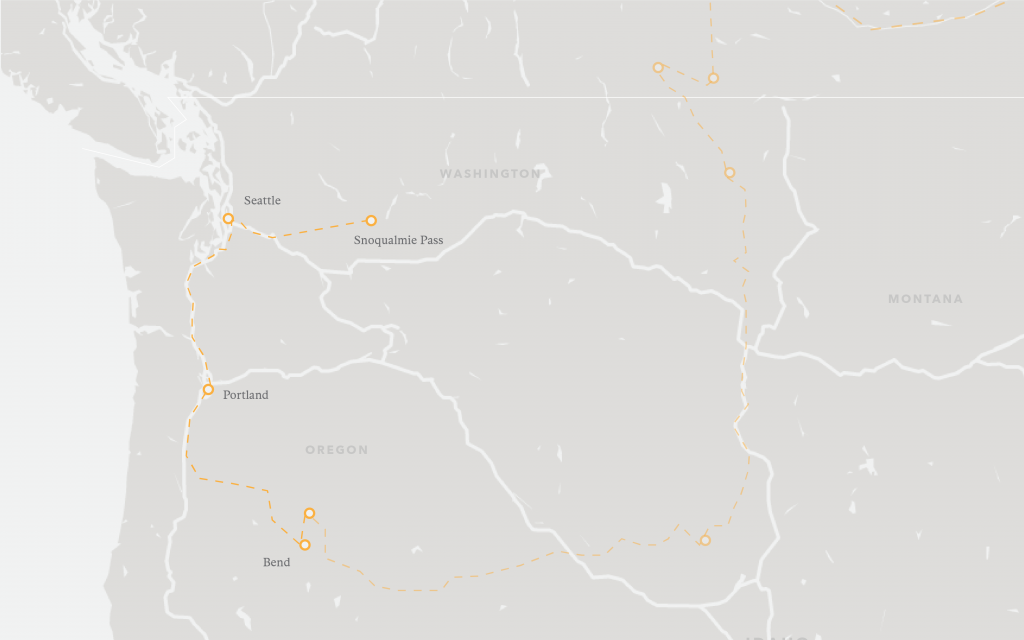
Stop #9
Day 24 : From damp forests to fresh powder
In a matter of hours, the vibrant green moss of Oregon (Journey #8) makes way to freefalling snowflakes. As he head North, the highways are becoming snowed up and the cars are slowing down. We even see a few vehicles pull over to put chain on their tires. We plough through, we’ve seen worse in Quebec!
The road is nothing short but grandiose, we’re surrounded by conifers and snow-capped peaks. We take the first exit, which seems to lead to a park. Today’s mission is to play outside! We halt at the Baker-Snoqualmie National Forest. We’ve entered Pacific Crest Trail territory, a 4,240 kilometre trail that extends from the Mexican to the Canadian border. You might have seen it in Wild which stars Reese Witherspoon.
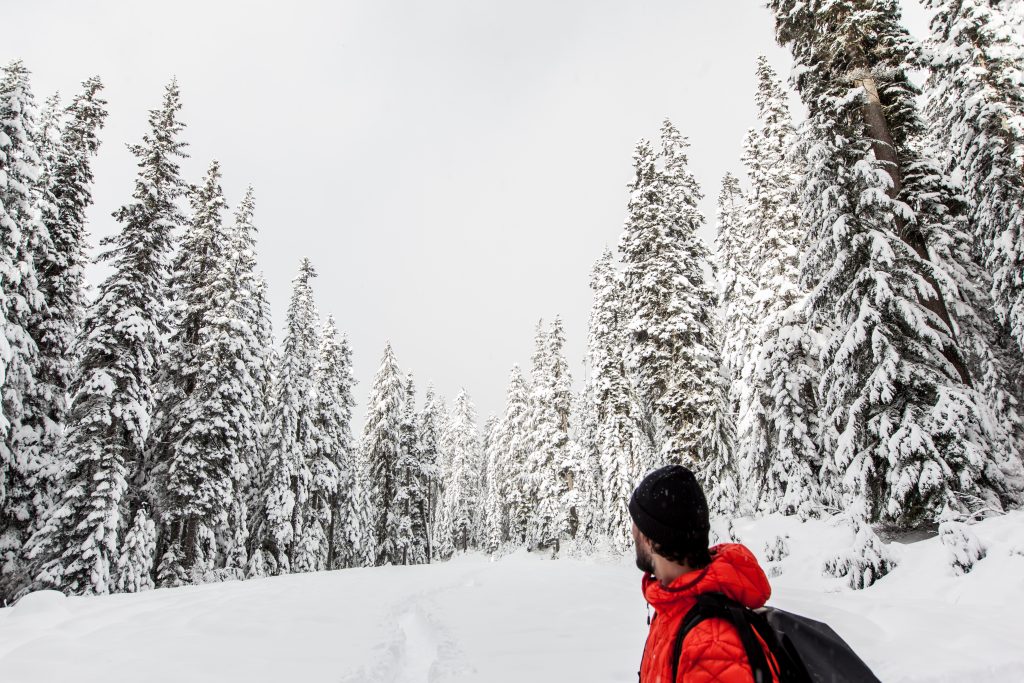
In the mountains, the amount of snow would make any backcountry fanatic drool. As we hike along the trail, we cross paths with fellow hikers and a few backcountry skiers. Their candid smiles and red cheeks are the embodiment of winter wonders. The magical vibe is getting to us too, we’ve become children again: wrestling in the snow, throwing snowballs, flipping in snowbanks. With the sunset upon us, we jog back to the RV. Before leaving the area, we stop one last time to take in the mystique of the forest and the moon. It almost feels like a scene from Stranger Things.
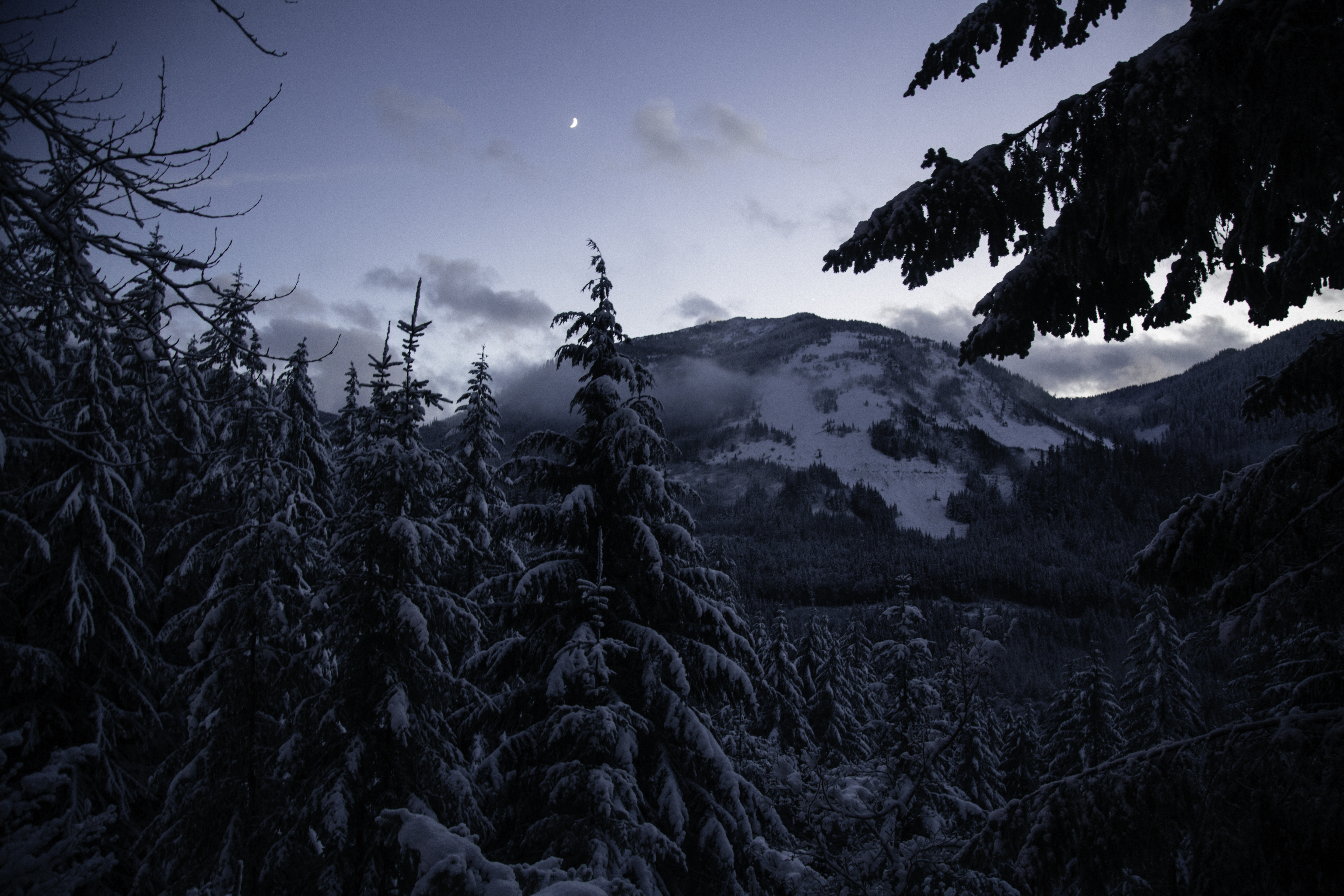

We’re expected in Seattle for diner, at one of Catherine M.’s friends parents house. Cathy is a retired editor and Joseph, a videographer. We discuss political, artistic and societal issues while indulging in a copious meal. We feel extremely lucky to be greeted in such a fashion by complete strangers. This type of behaviour should give any doubter faith in humanity.
Day 25 : Distribution in Seattle
We’ve grown accustomed to splitting up once we’ve reached a city. Half of the troop stays back to work while the other visits shops. The Elliott Bay Book Company, Kobo, Filson, Tides & Pines and Read All About It all decide to carry BESIDE!
Seattle has a lot to offer, but we need to cross the border this evening to settle in Squamish for the night.
Day 26: Fishing with Michael Barrus and Spencer Daniel
Without the slightest idea of what our surroundings look like, we wake up the next morning to a pleasant surprise. We’re at the foot of an impressive mountain, it’s cold outside, but that’s not what’s going to stop us from fishing in one of the regions most pristine rivers. The spot is a bit of a secret, Michael and Spencer head there often during the fishing peak season. The pair are true adventurers, whether it’s when they are fishing or surfing, there’s always some unfortunate event that happens, which they’ve learned welcome with open arms.
“ We’ve name ourselves the Fiascoho. For the coho salmon, but more importantly for all of our hapless fishing trips. We’re often left empty handed, but we have fun anyways!”
Will we be luckier than the Fiascoho duo today? Time will tell, but we share the principle that time spent with nature is worth way more than the amounts of bites in a day.
“There’s so much more to it than catching a salmon. You have to study them, understand their environment and be privy to the seasonal changes. Every day I learn something. The amount of knowledge is endless and that keeps me curious and always out of my comfort zone, which is motivating.” — Michael Barrus
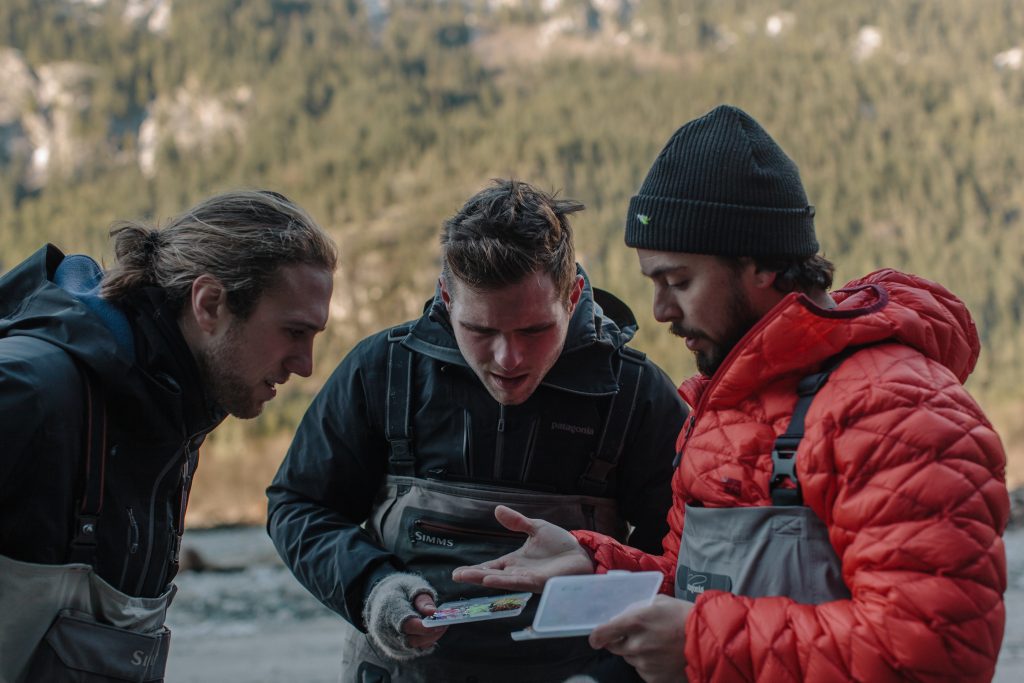
Michael gets a sense of fulfilment by putting himself in all sorts of learning situations. Californian by birth, he moved to British Columbia for it’s unexplored wild nature and to pursue his studies in applied sciences. He specializes in the impact of drug consumption on humans. Michael is also a photographer. You can see one of his pictures right on the cover of BESIDE’s first issue. In the latter, Michael tells the tale of one of his many fishing adventures.

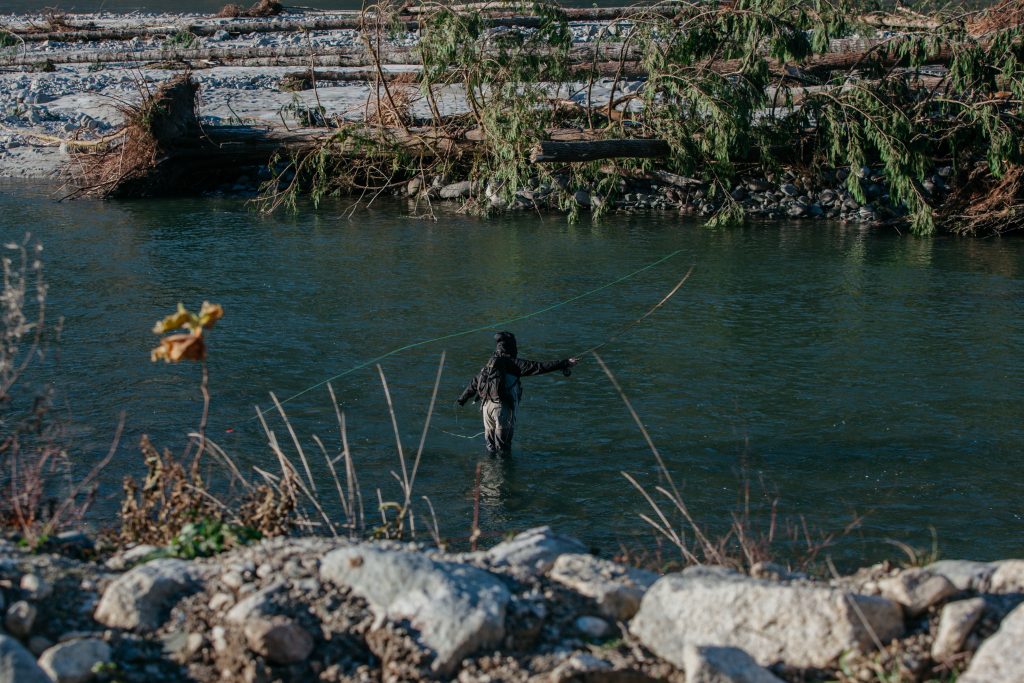
Speaking of adventure, J-D, Spencer and Michael are all knee-deep in the water ready to fly fish. The sun reflects on their thin fishing lines, a beautiful scene we’re happy to be a part of. Elise, Eliane and I take advantage of this moment to walk along the riverbank. After a few steps, we smell a rather pungent stench. It smells like death and that’s precisely what’s causing it. There are hundreds of dead salmon scattered along the bank. Ignoring the cause of this disturbing site, we jump to conclusions. This can’t be normal, there must be something toxic in the water, some sort of pollution. It’s only later that we find out that this is indeed the cycle of life.
“The life cycle of the Pacific salmon revolves around laying thousands of eggs at the bottom of a river or lake. The male and female accomplish an extraordinary countercurrent journey to return to the spot where they were born (up to 2000kms to reach the Yukon!). During their travel, they go through an important physical transformation, they then spawn and die.“
Leaving Squamish, we see deer and a few bald eagles disappear in the forest. These moments of grace makes us appreciate the time spent with Michael and Spencer even more. We decide to have diner all together, since we’re going to be in Vancouver, sushi seemed like the most logical choice.

Day 27: Vancouver, you’re gorgeous, but being here means the end is near
8AM, one of our last mornings onboard Raymonde, our RV. We would have loved to return to Montreal with her, but she’s awaited by other RVers. We book our plane tickets for the very next day. A little bit last minute you’ll say, but the approach is in line with our roadtrip as a whole. We would plan each day at a time, and it had proven to be an effective method.
The day flies by. Nonetheless before our departure, we succeed in forging relationships with interested retailers notably at OLD FAITHFUL, Neighbourhood Quality Goods, Much and Little, Vancouver Special, Brick & Mortar Living, Alpine Start, Boardroom Shop and Matchstick.
We can feel the BESIDE community growing, there is a very real desire to reconnect with nature. A mission that transcends any geographical or generational barrier.
In addition to distributing our first edition, our goal was to connect with members of the new outdoor movement. On a small scale, everyone we’ve met on this trip has proven to be curious, innovative, responsable and brave. It’s pretty easy to become friends with people that have values akin to ours and put those values in practice every day.
It’s around a table in Vancouver, glass of Prosecco in hand, that we cheers one last time all together. We’re emotional just thinking that we’d be closing this chapter of our lives.
Tomorrow, we’re going back to Quebec, but in many ways the BESIDE adventure has really just begun.
Written by : Catherine Bernier
Edited by: Catherine Metayer
Translated by: Élise Legault
Photos by : Catherine Bernier, Eliane Cadieux
Aboard: Jean-Daniel Petit (founder), Catherine Metayer (Editor-in-chief), Eliane Cadieux (art director & graphic designer), Julien Robert (director), Catherine Bernier (content creator), Elise Legault (producer), Chanelle Riopel
#LiveBeyondTheBend





